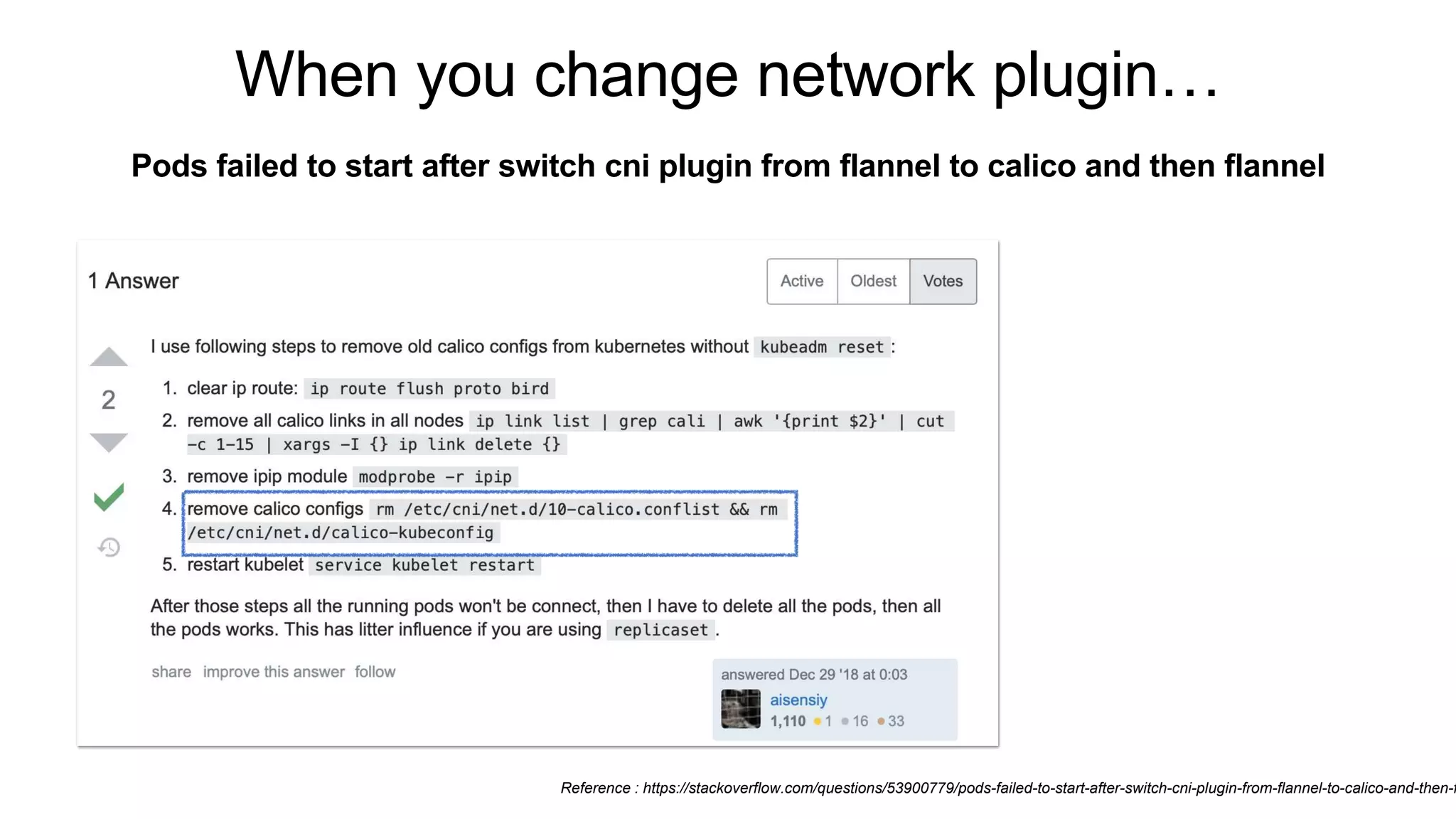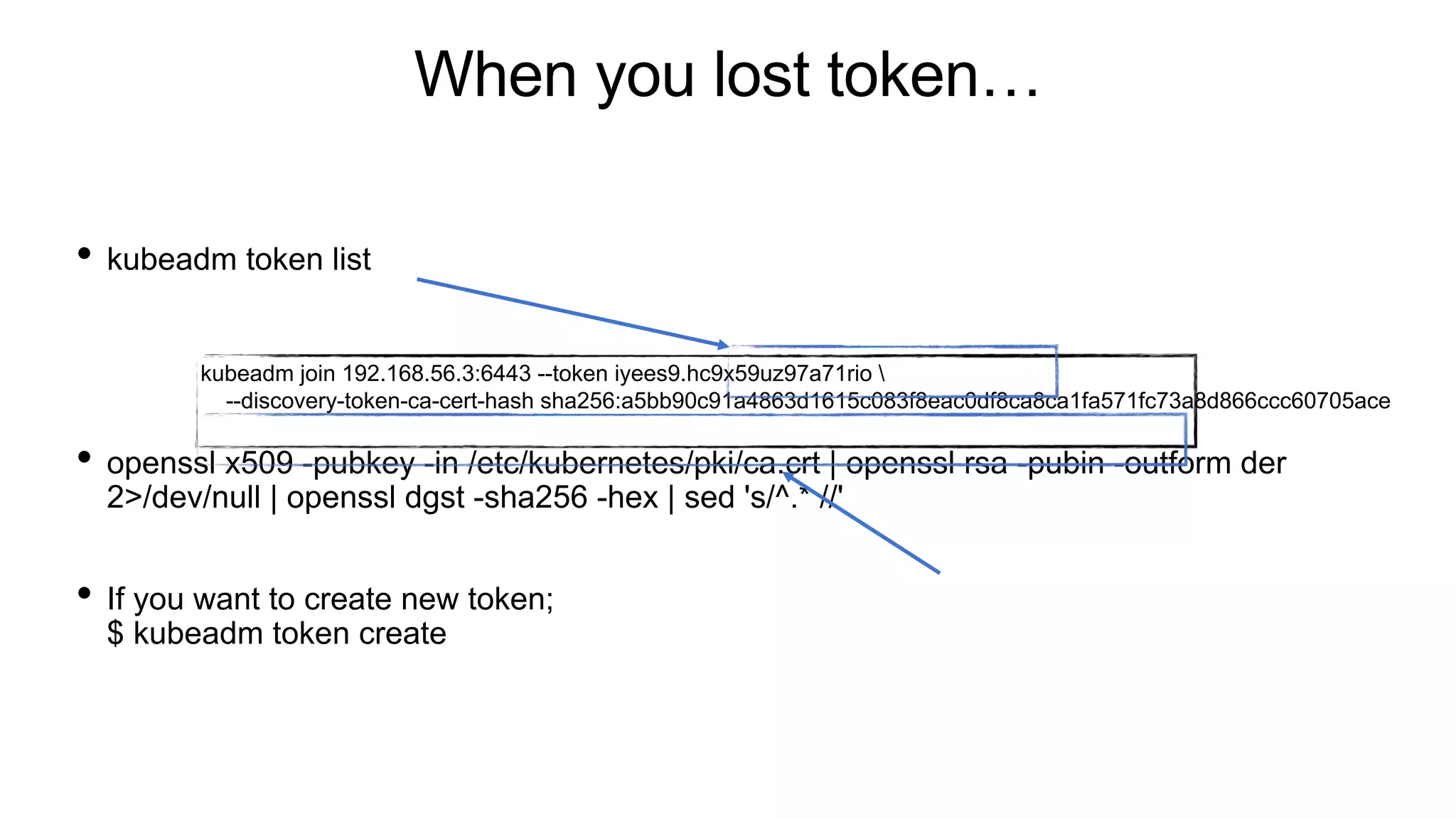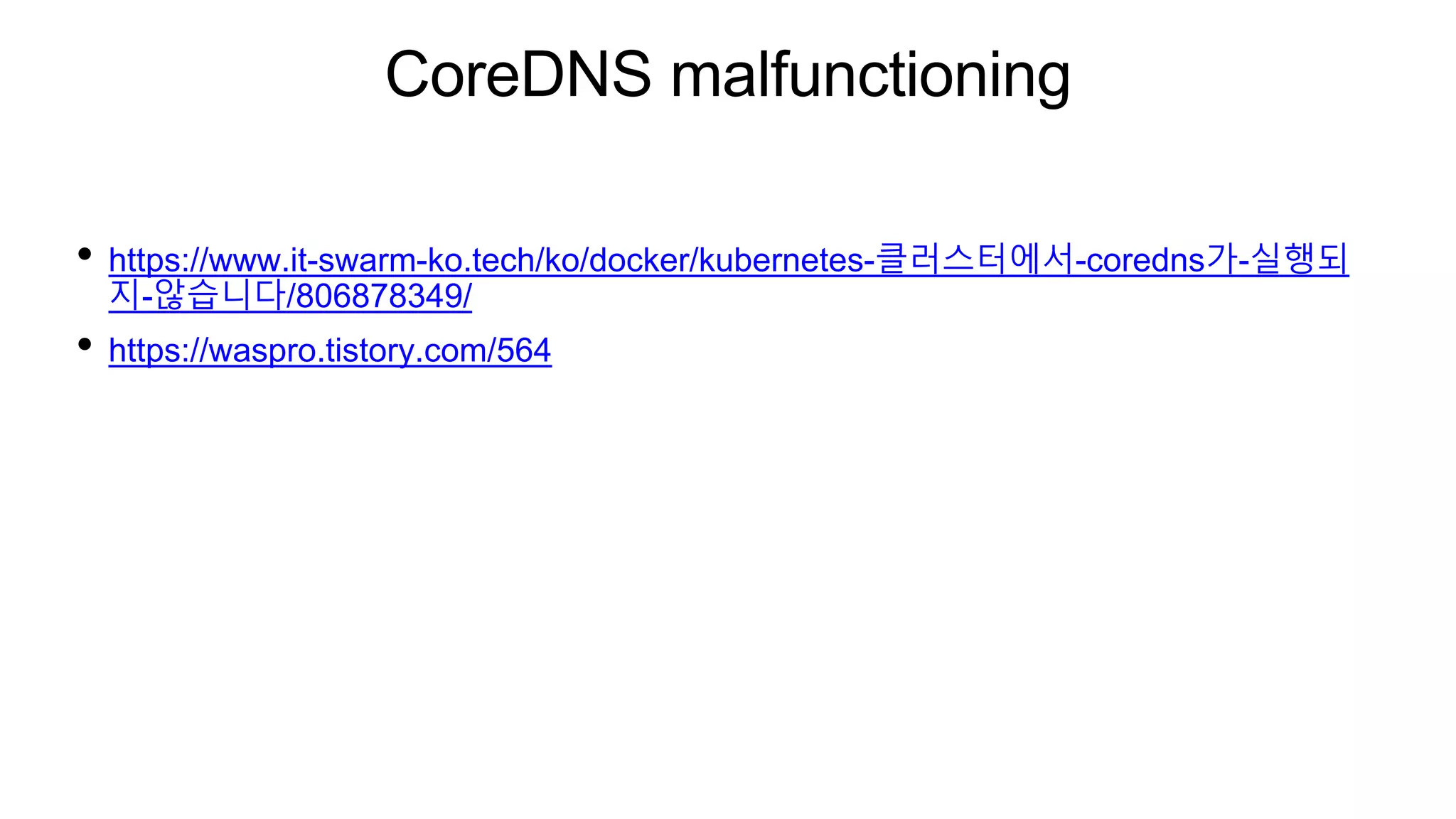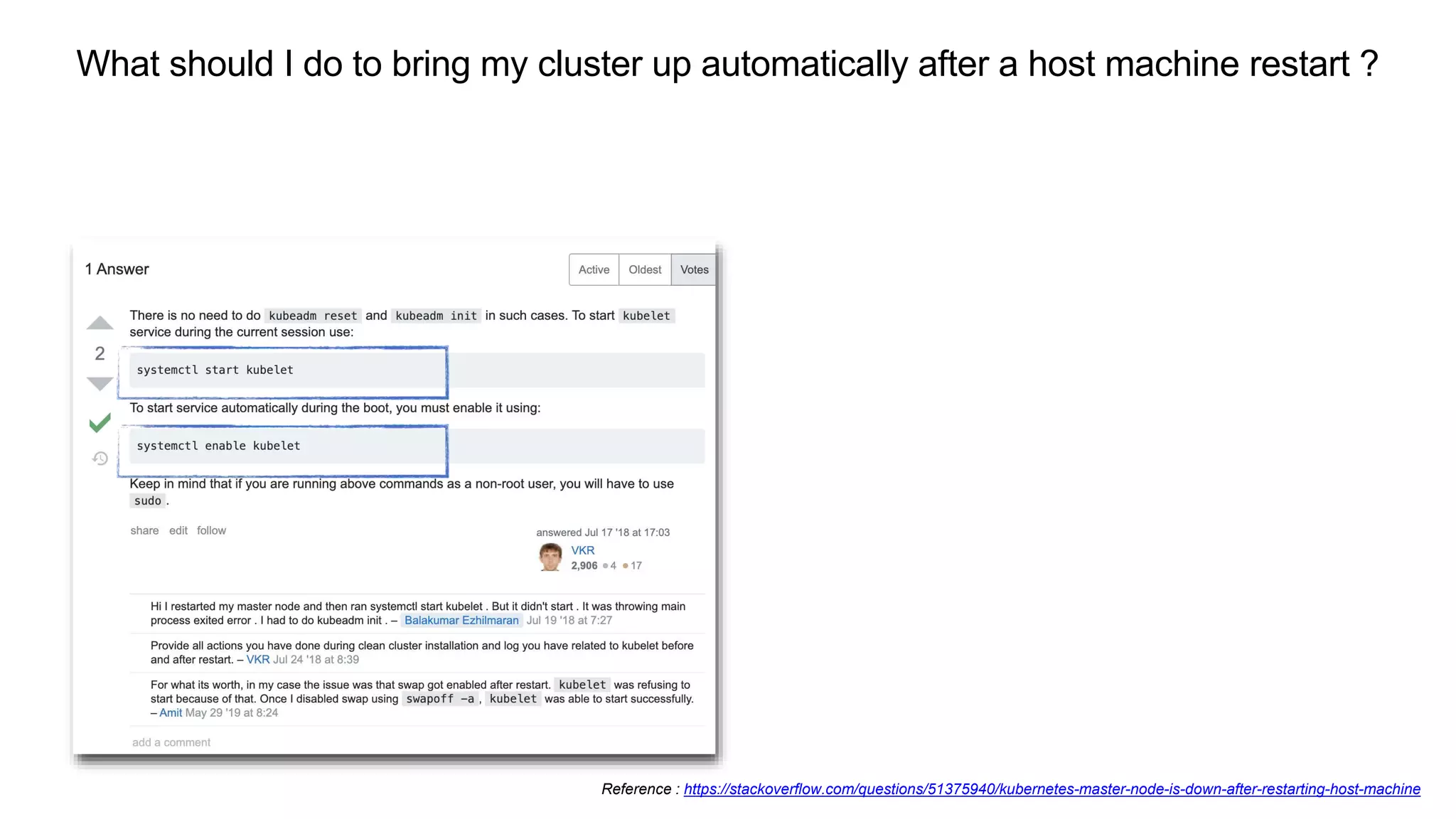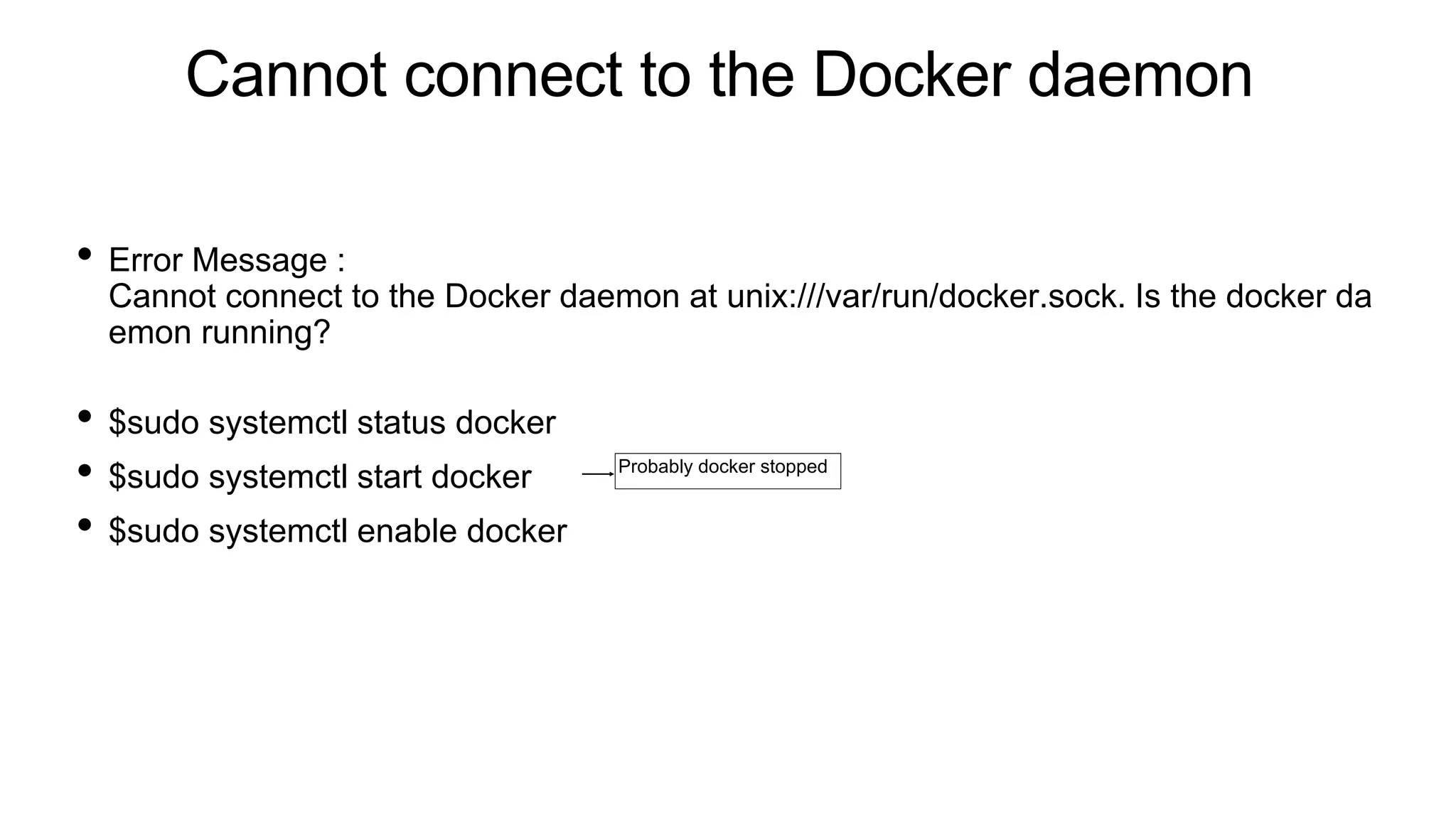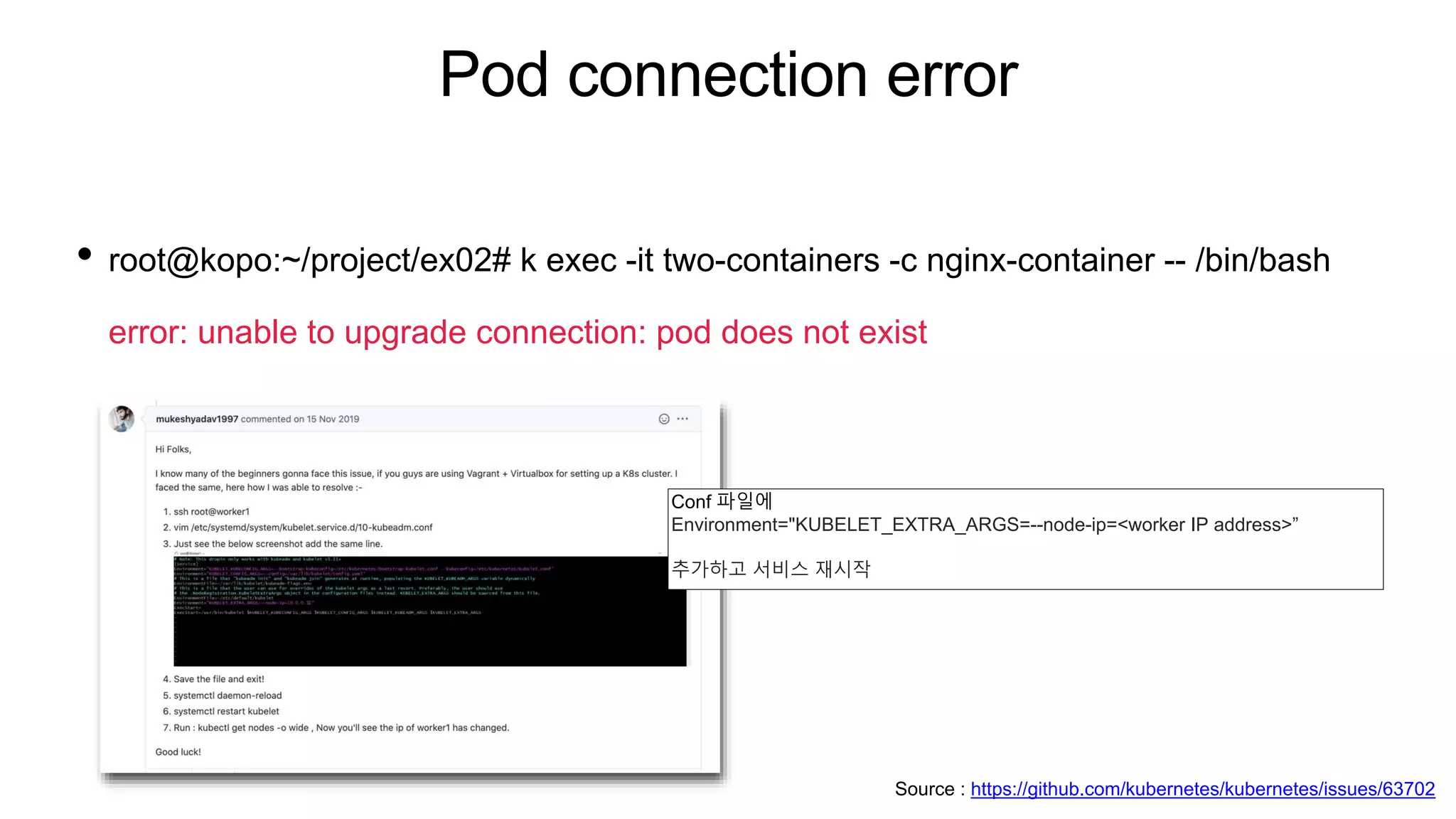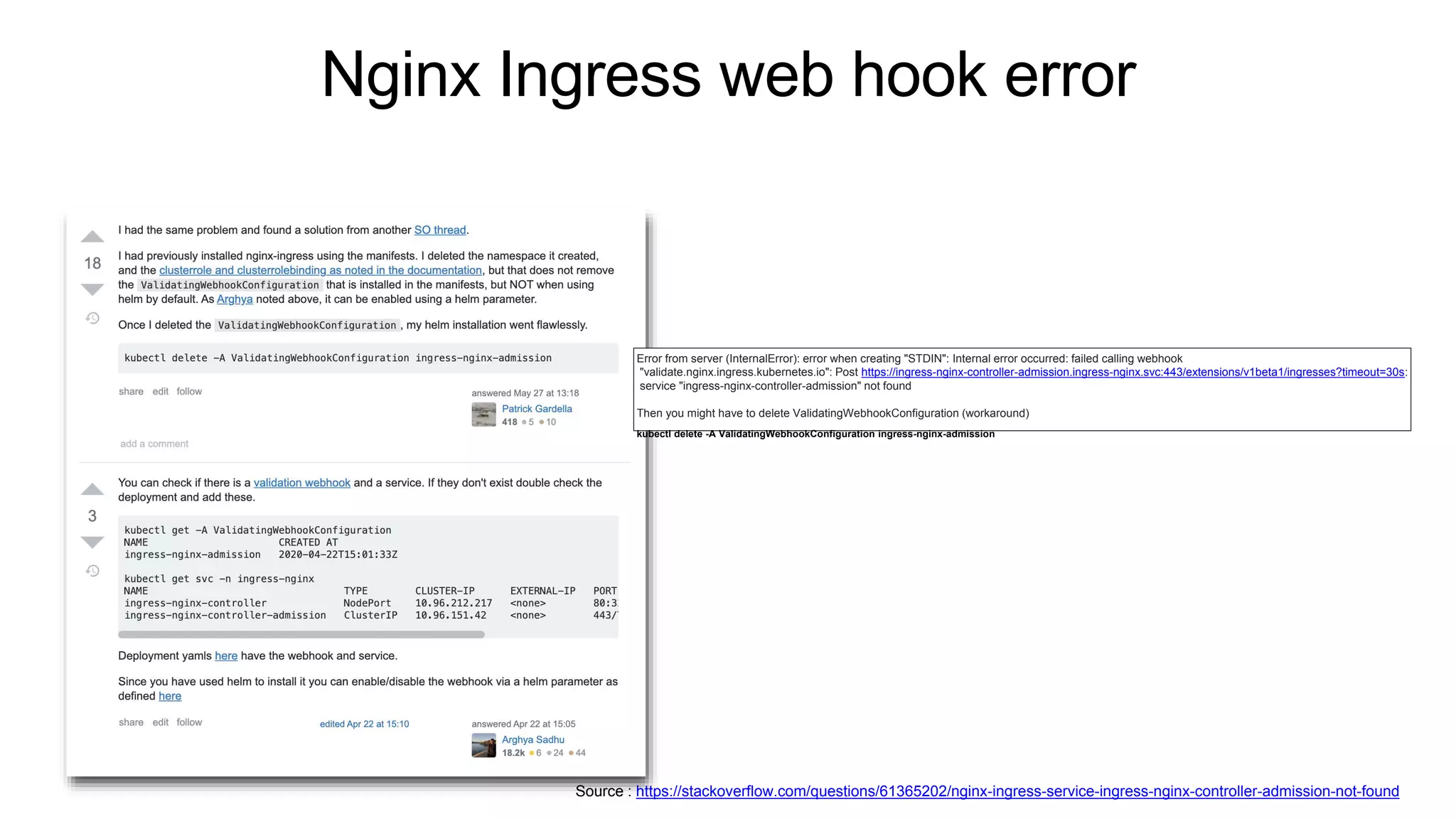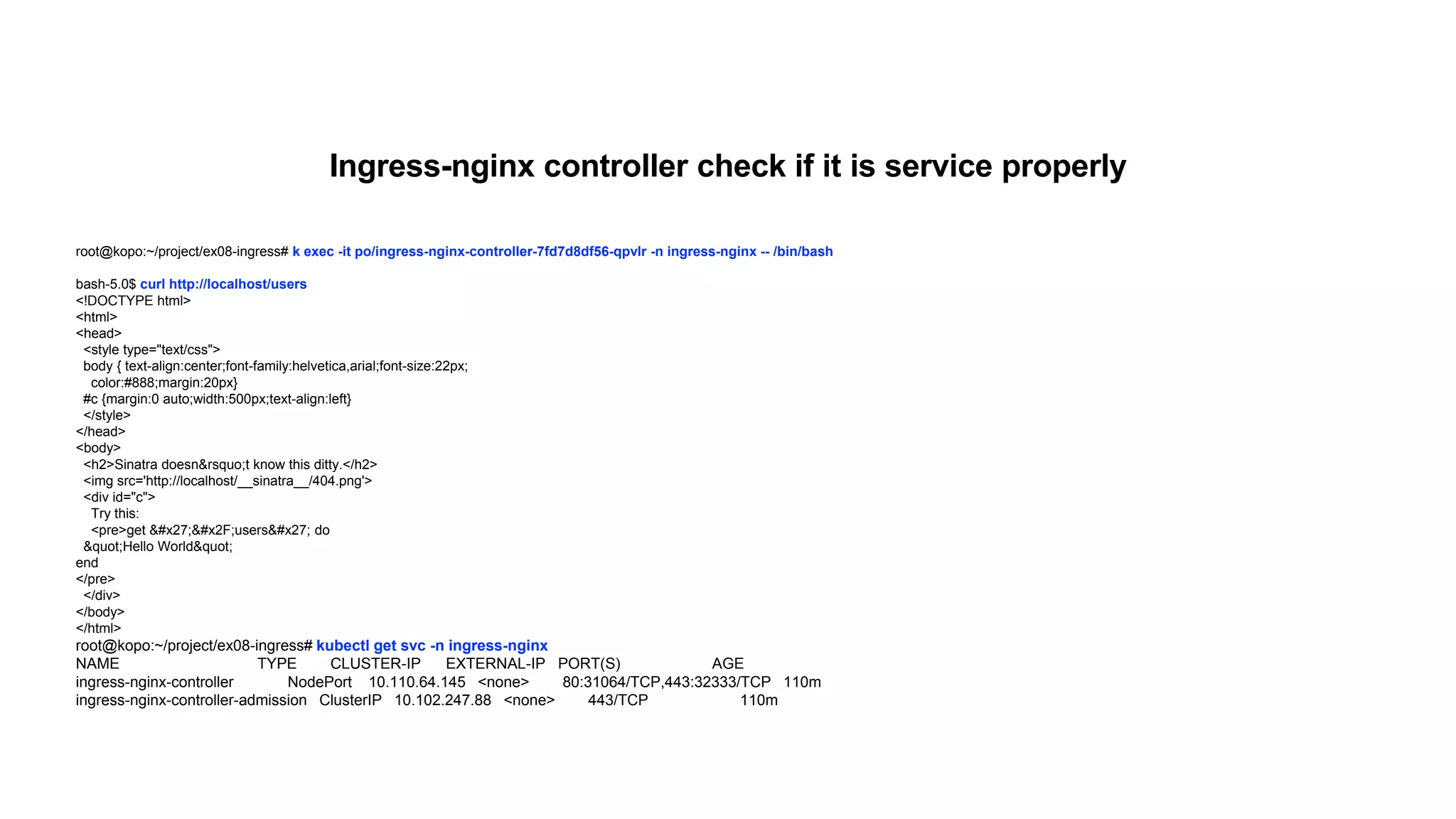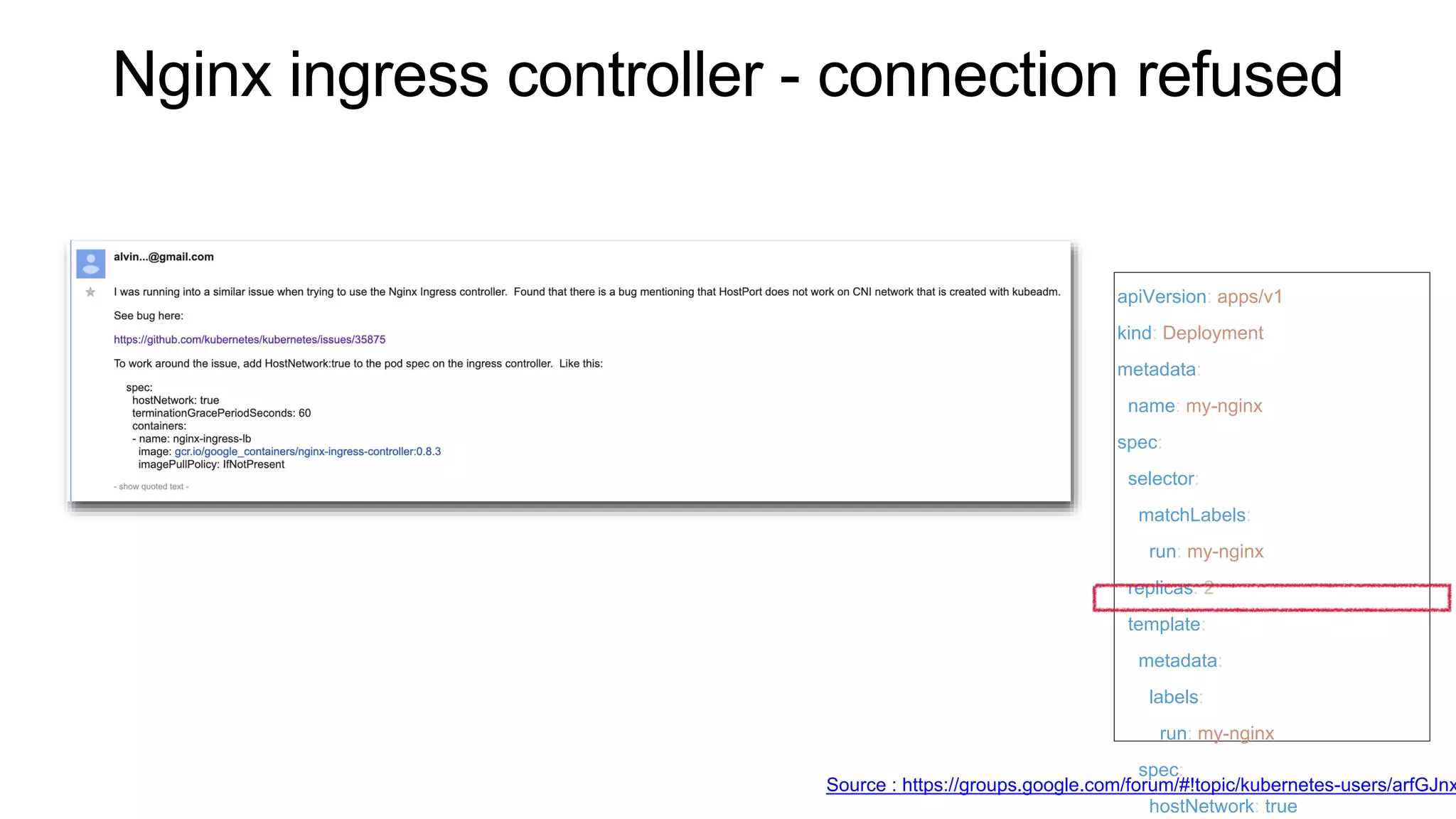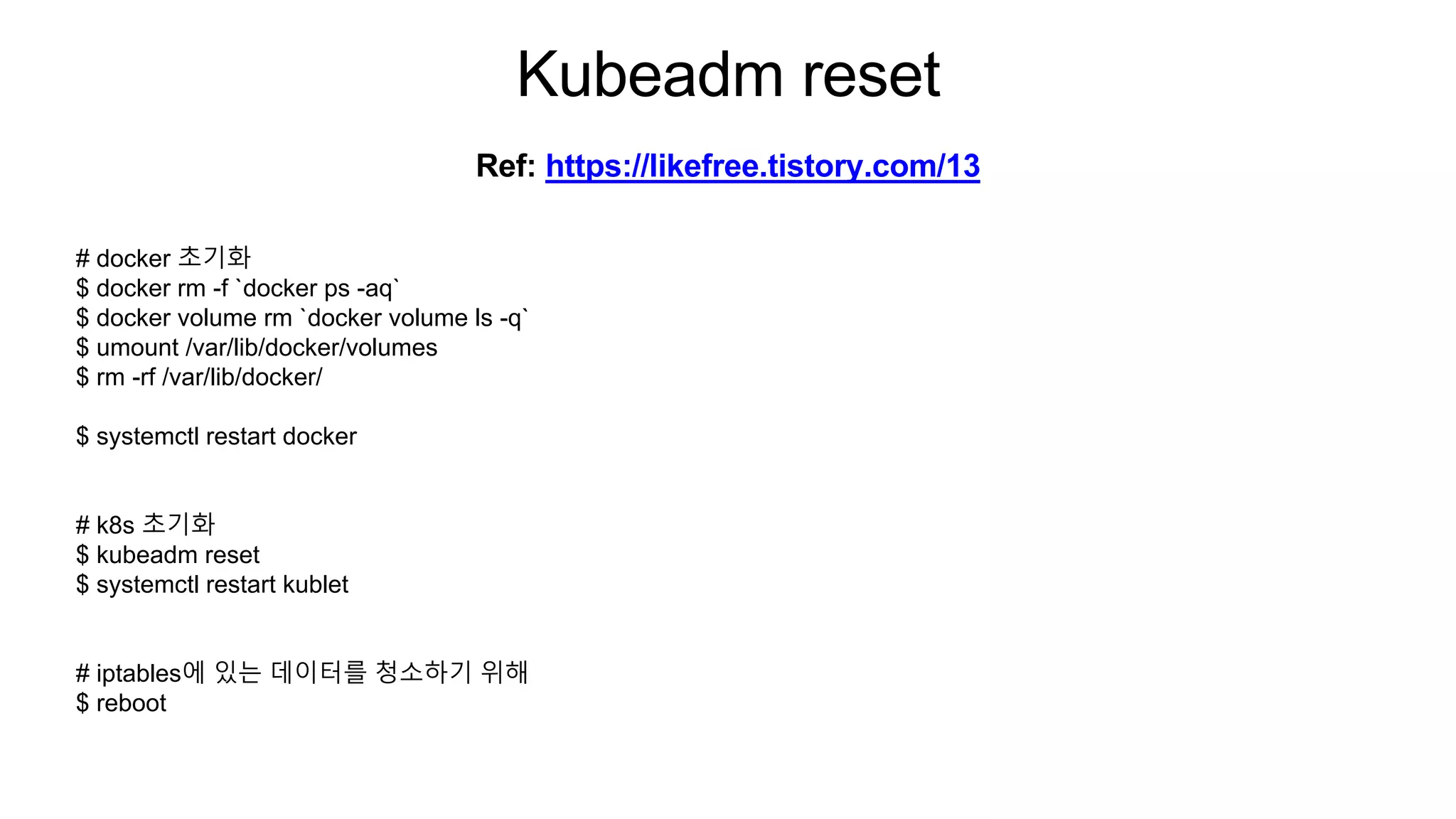The document provides instructions for setting up Kubernetes on two VMs (master and worker nodes) using VirtualBox. It describes the minimum requirements for the VMs and outlines the steps to configure networking and install Kubernetes, container runtime (containerd), and CNI (Flannel). The steps covered include setting up NAT and host-only networking in VirtualBox, configuring the hosts file, installing Kubernetes packages (kubeadm, kubelet, kubectl), initializing the master node with kubeadm, joining the worker node to the cluster, and deploying a sample pod.
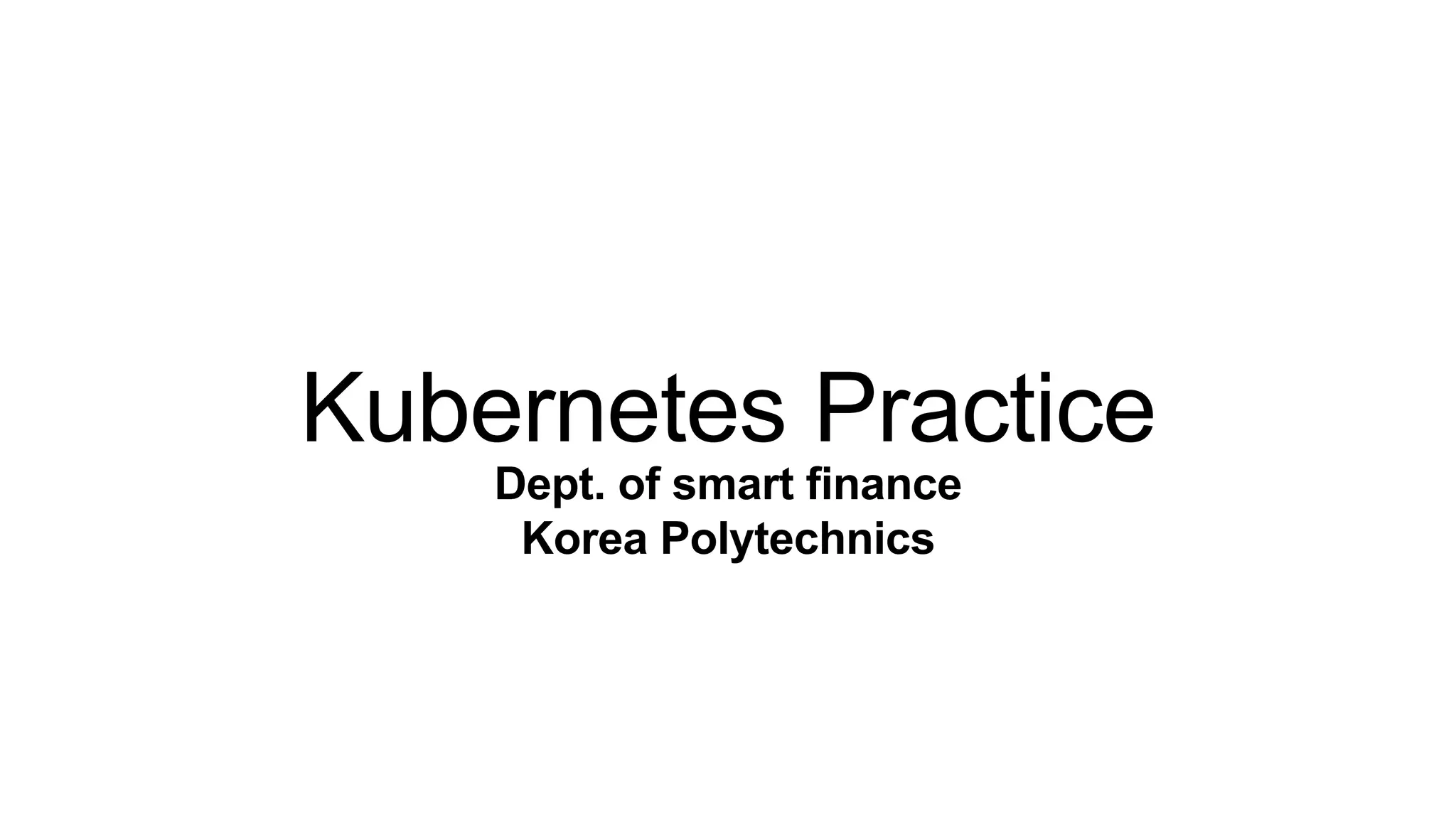
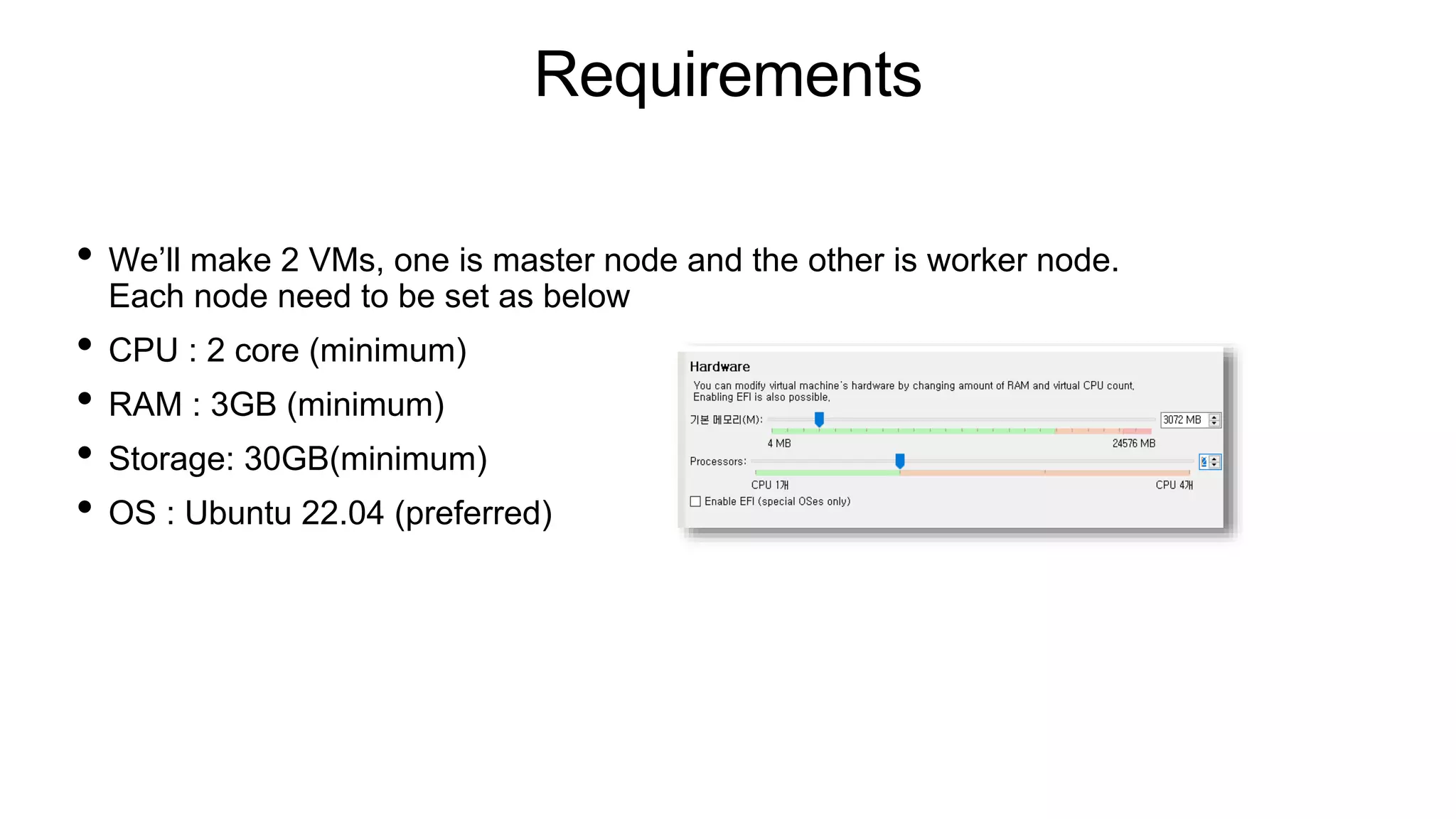
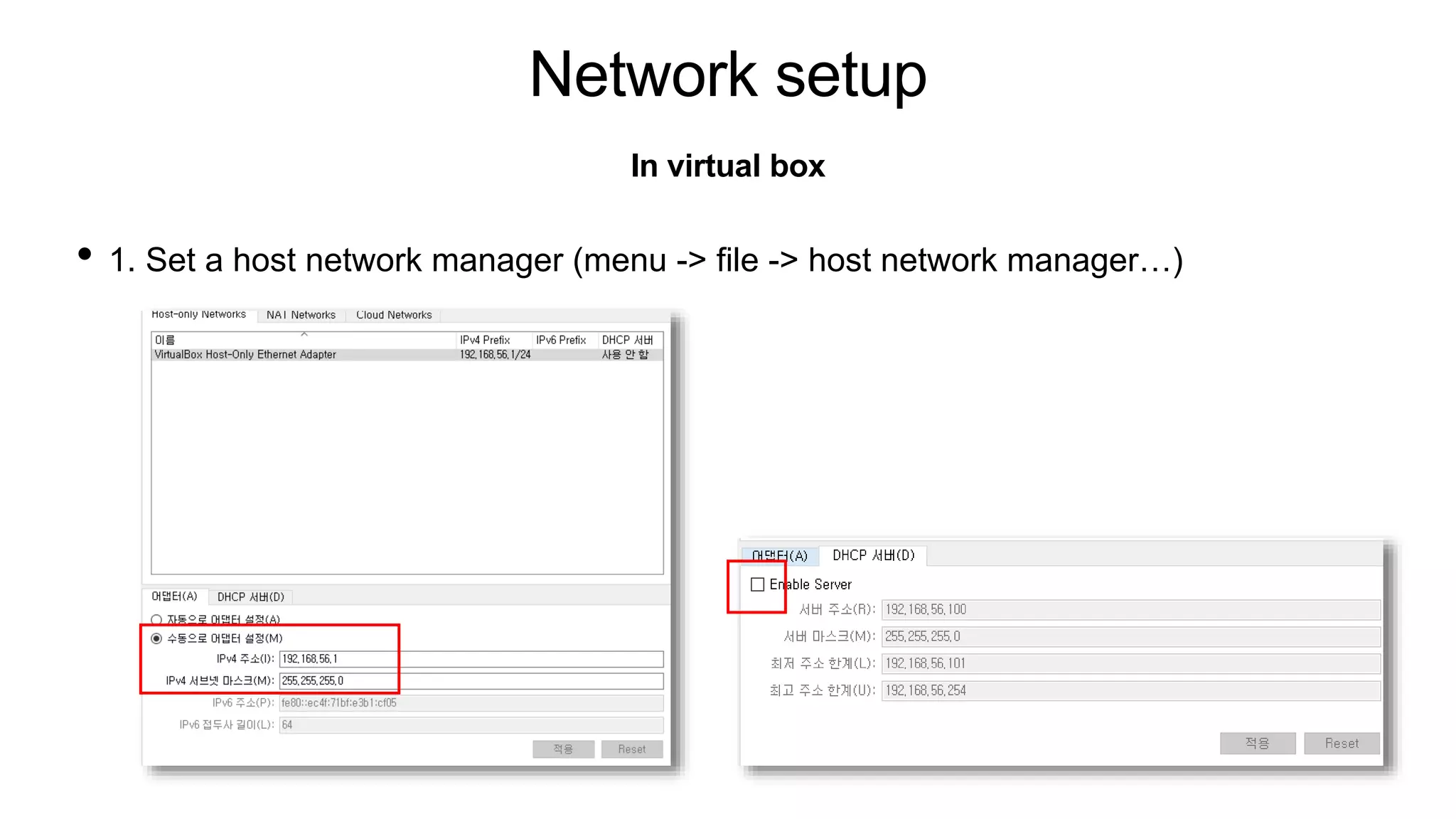
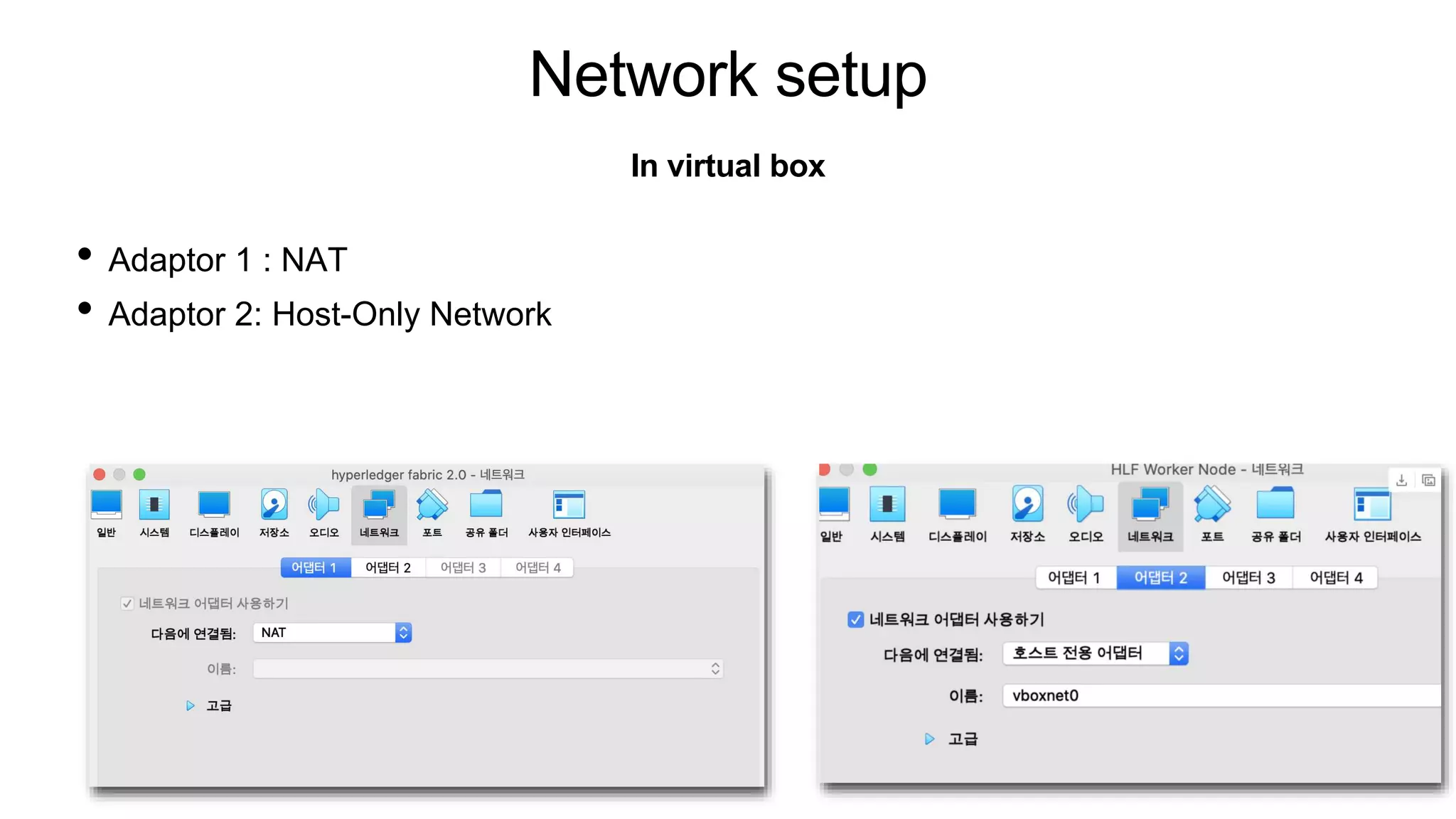
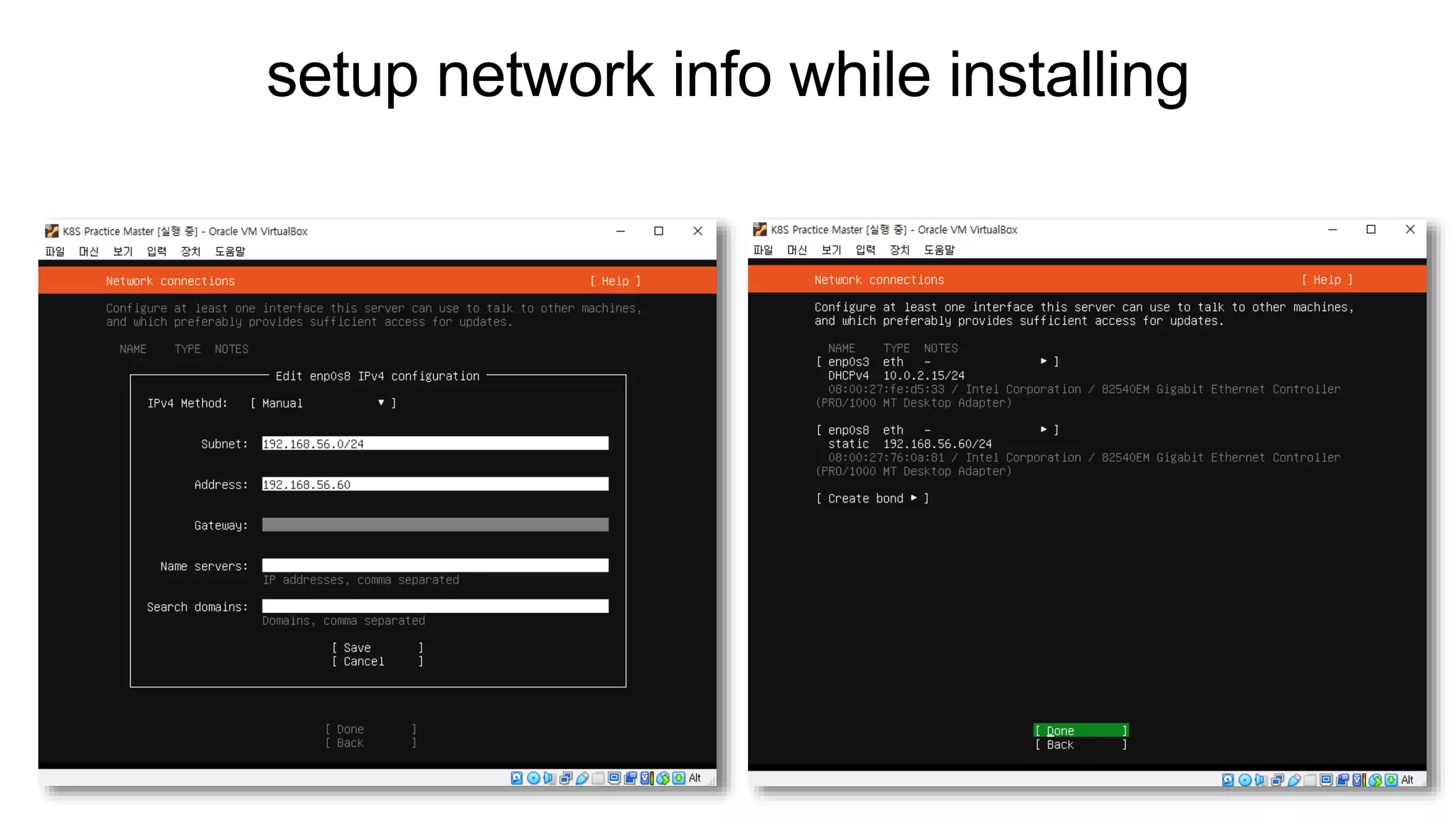
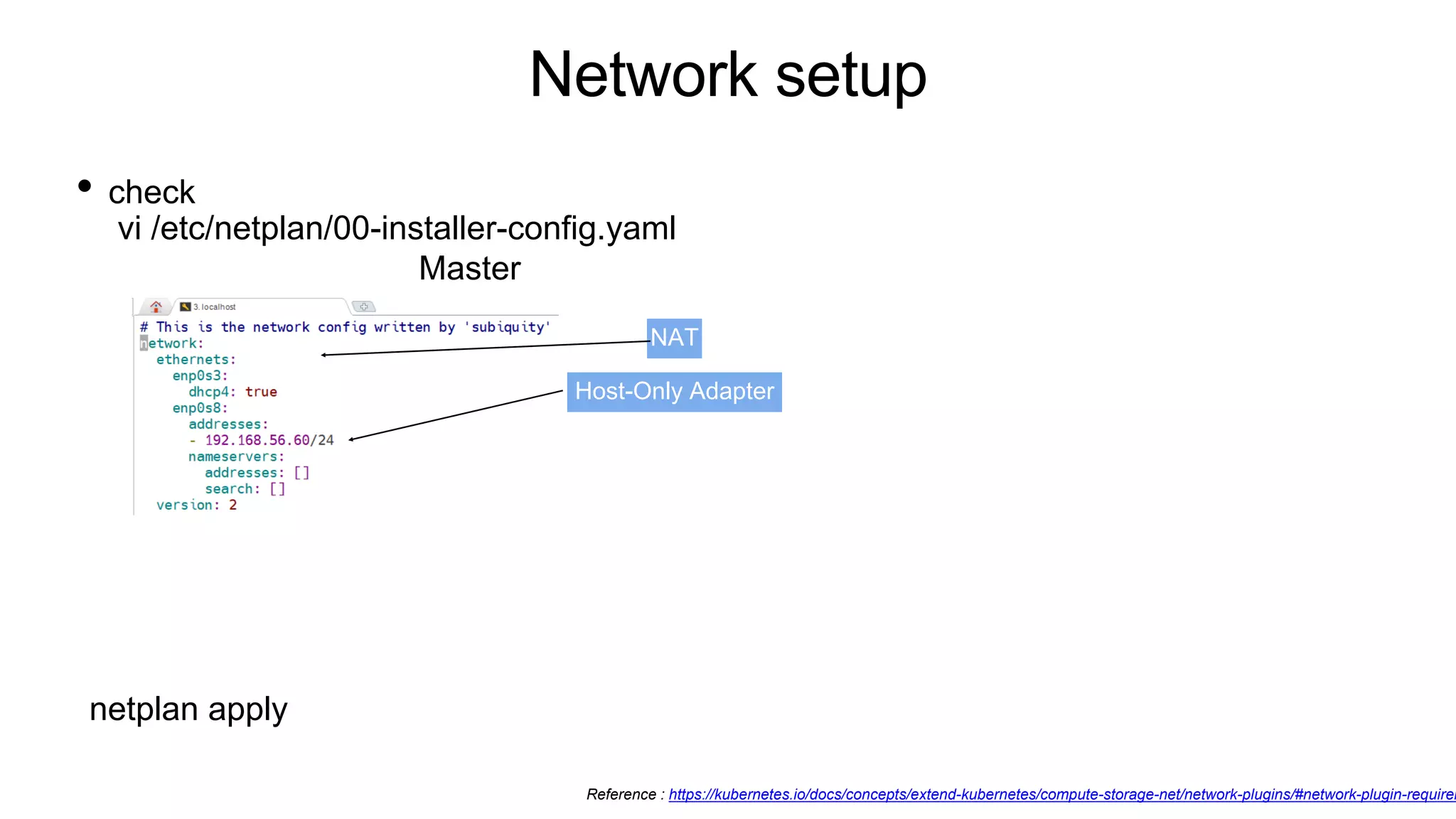
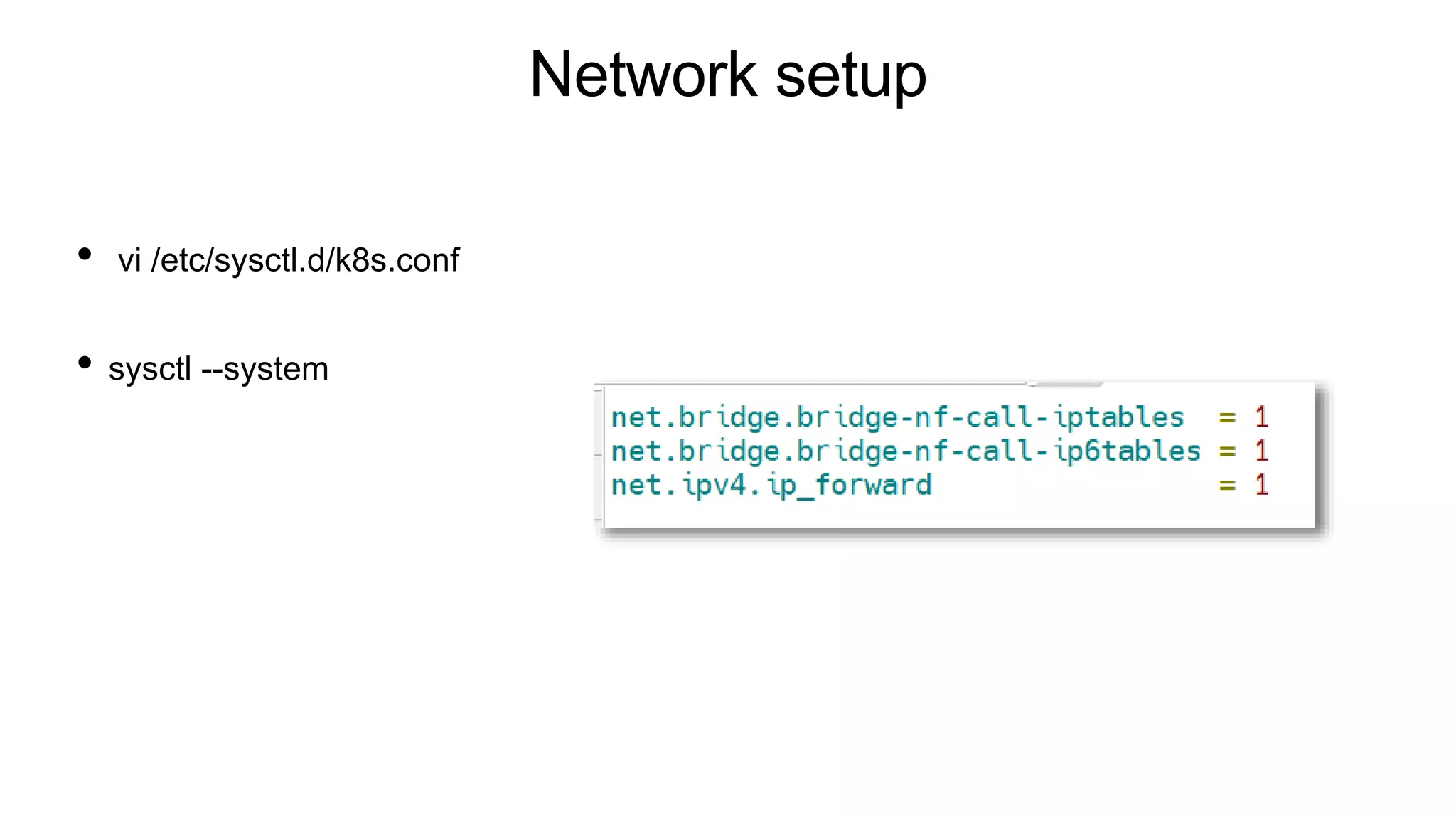
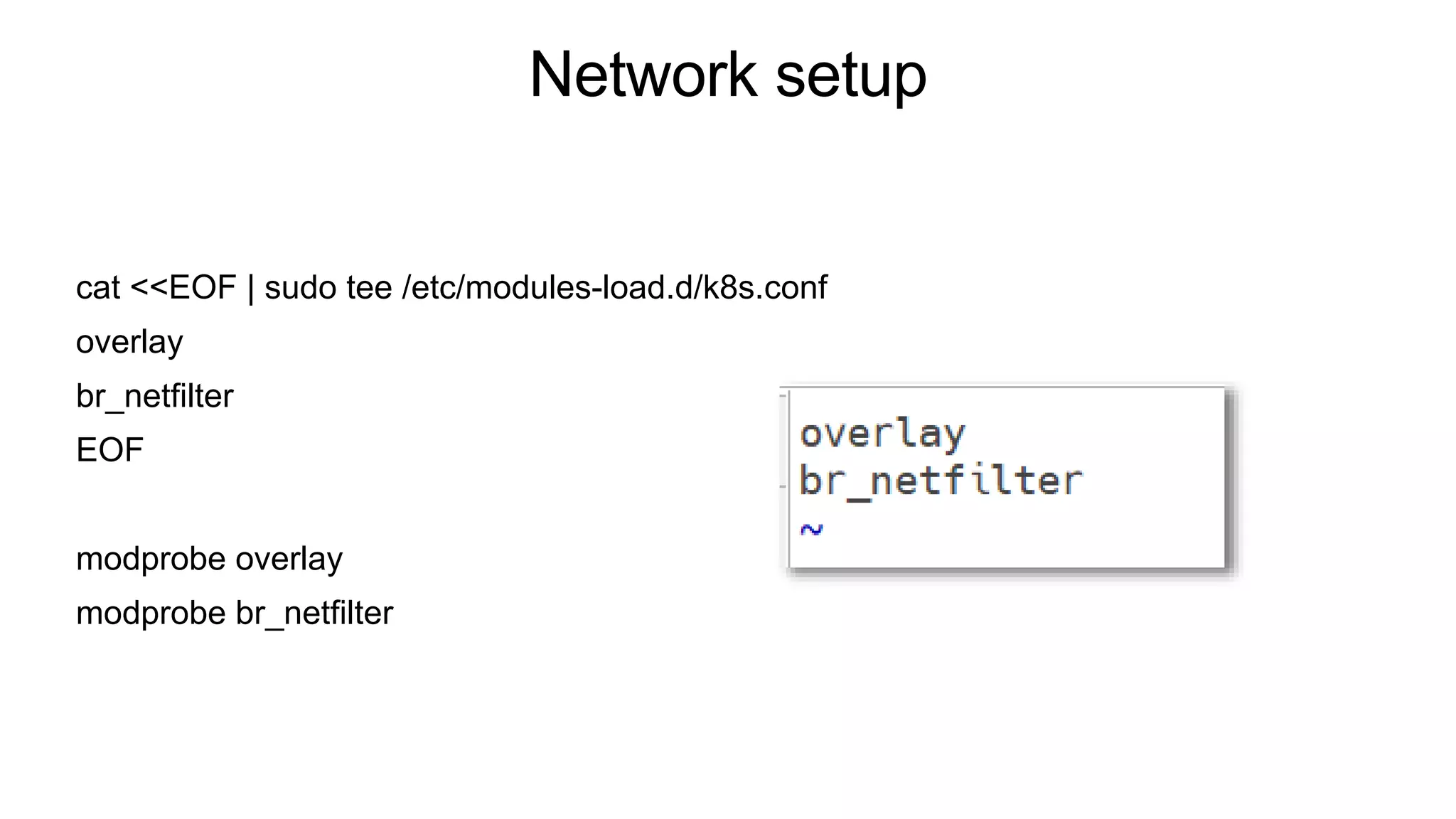
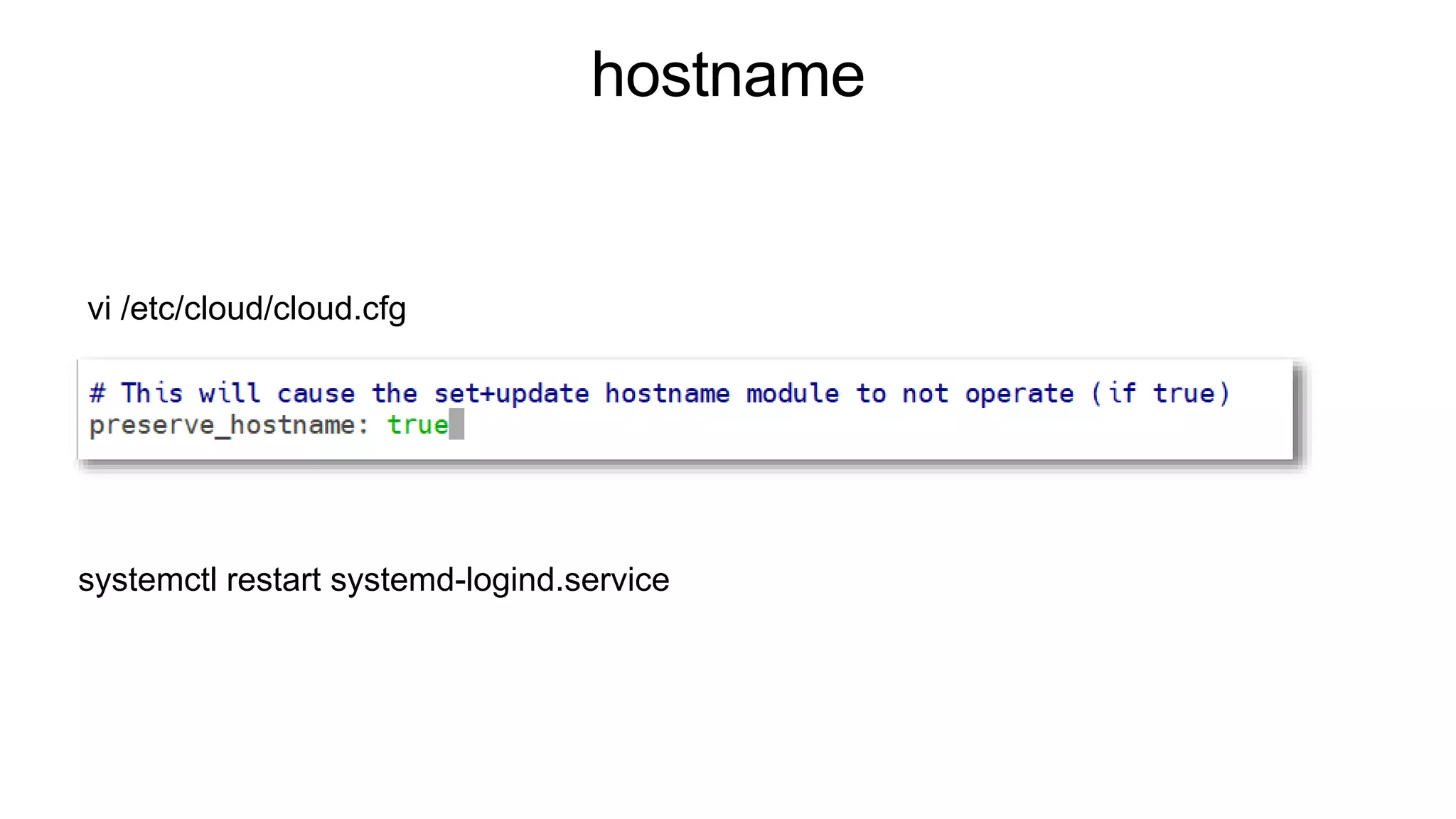
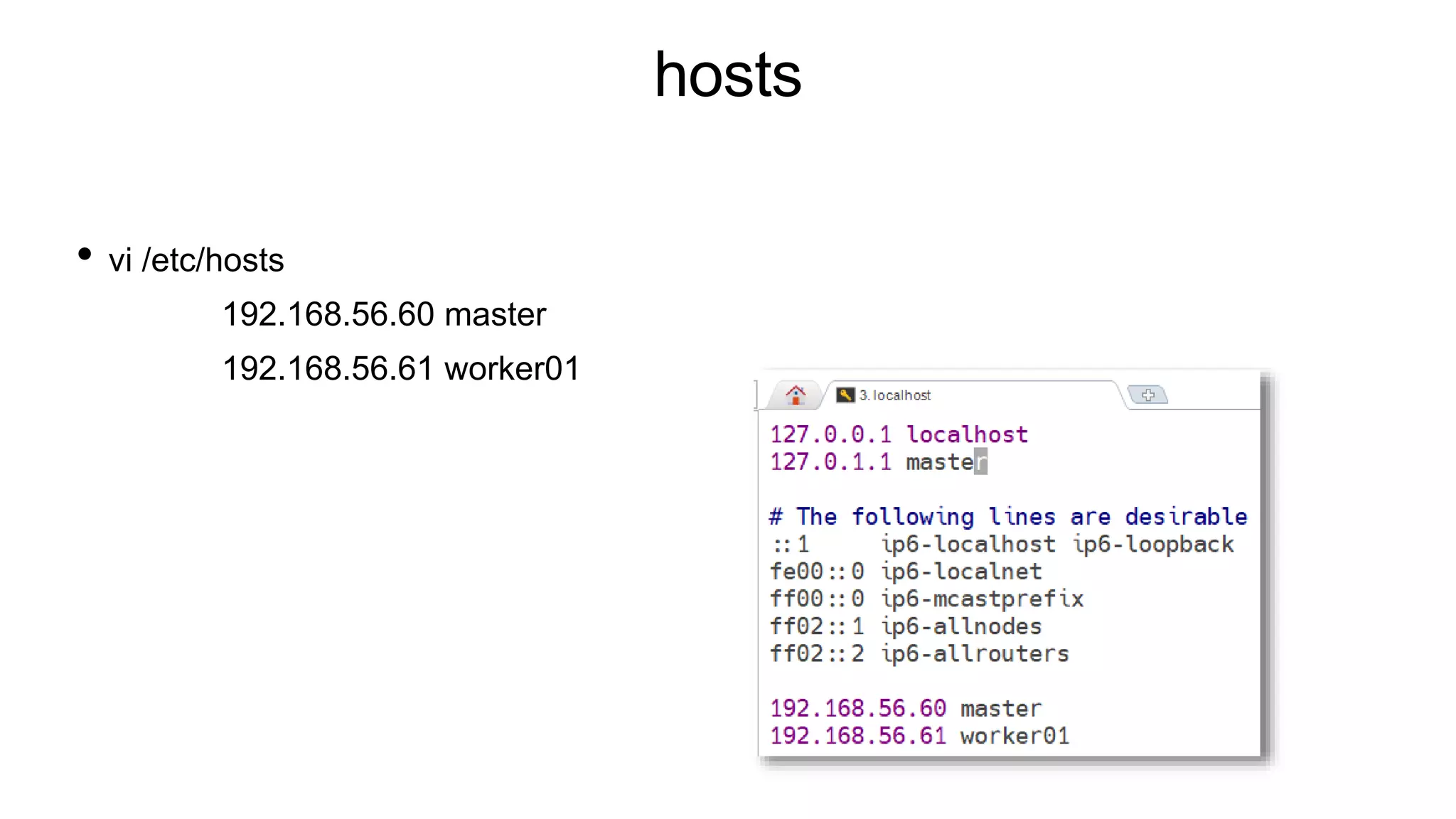
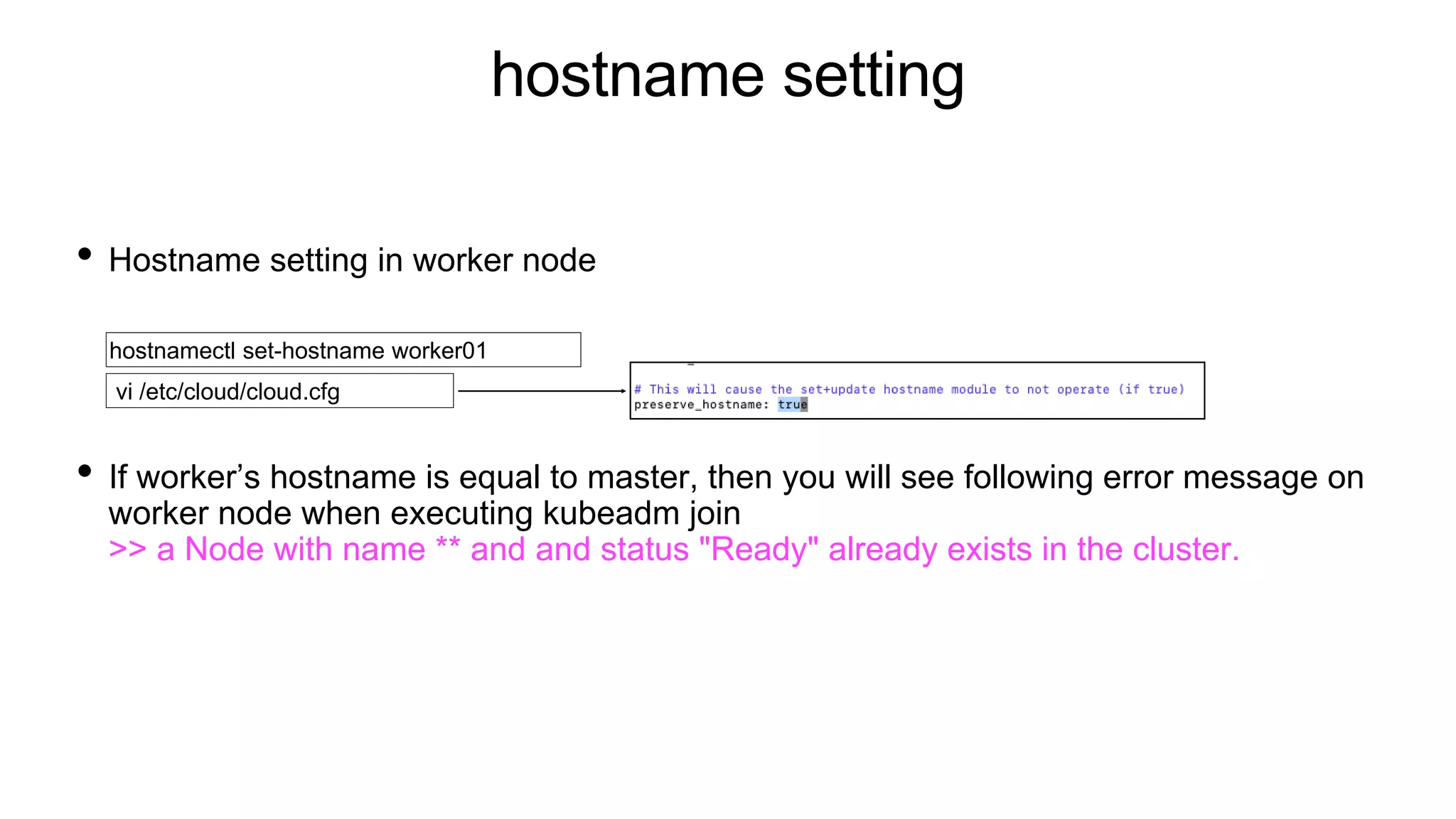
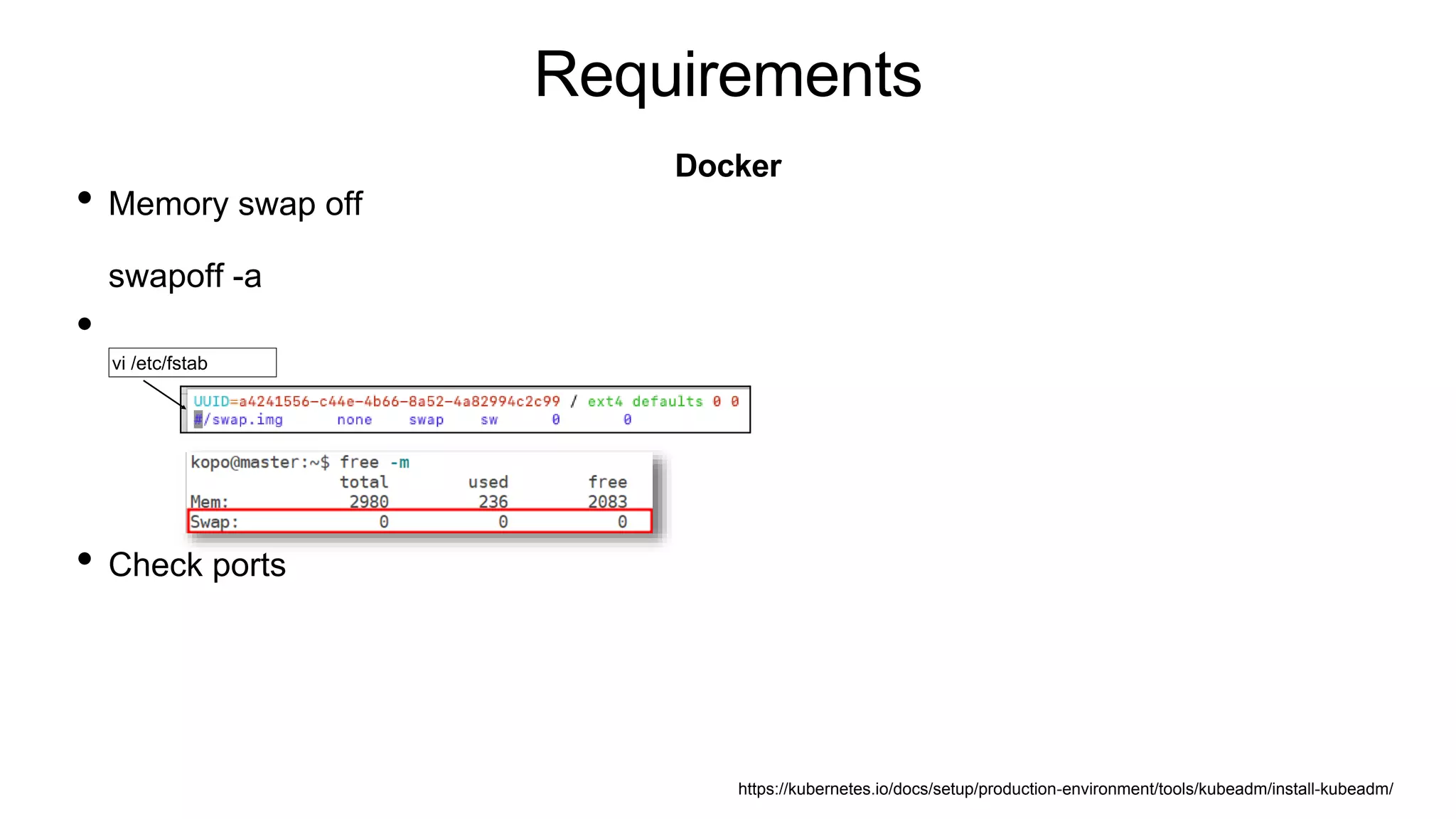
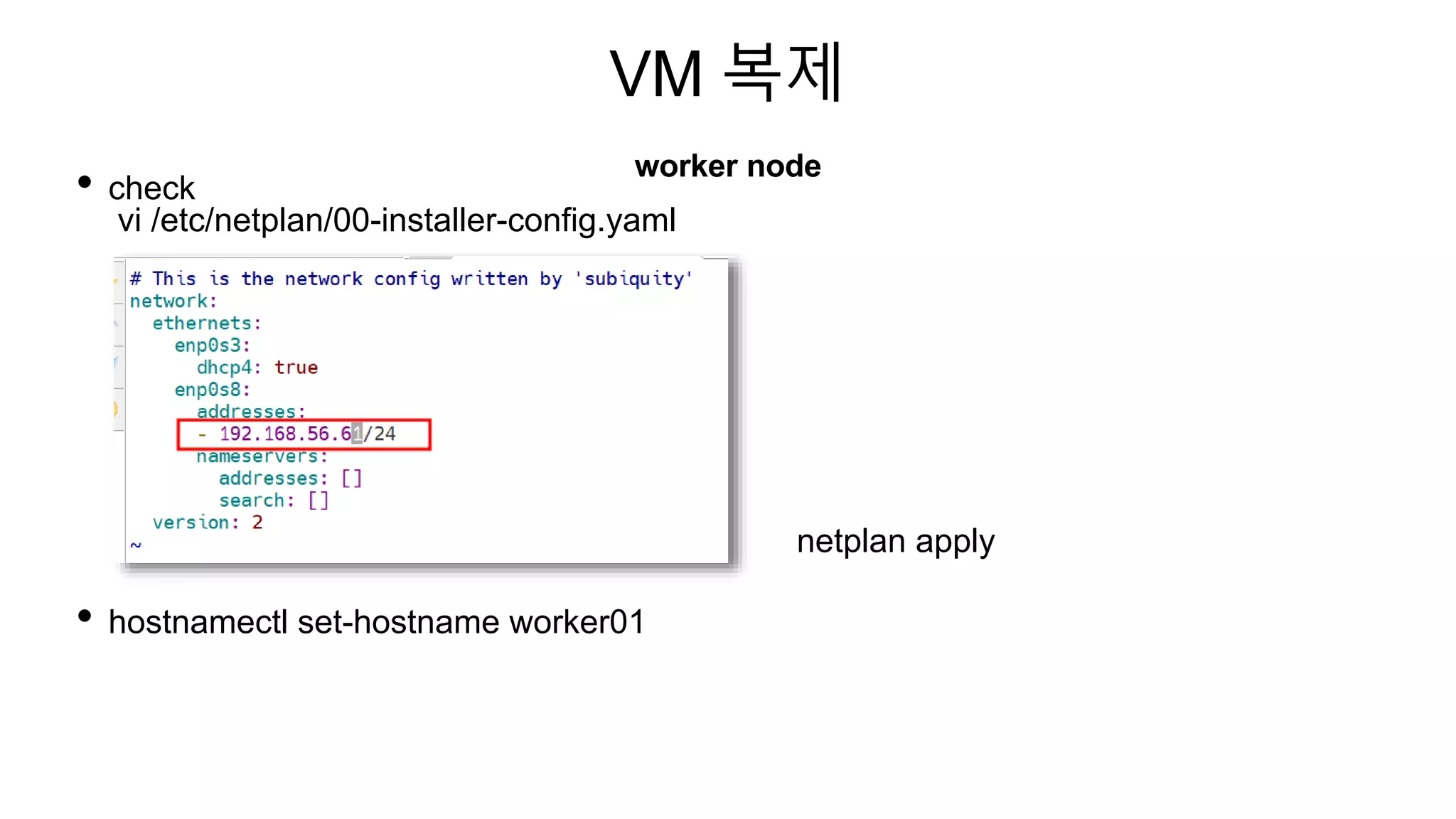
![[tip] virtual box range port forwarding
1. Vbox register(If needed) : VBoxManage registervm /Users/sf29/VirtualBox VMs/Worker/Worker.vbox
2. for i in {30000..30767}; do VBoxManage modifyvm "Worker" --natpf1 "tcp-port$i,tcp,,$i,,$i"; done
https://kubernetes.io/docs/reference/networking/ports-and-protocols/
ufw allow "OpenSSH"
ufw enable
ufw allow 6443/tcp
ufw allow 2379:2380/tcp
ufw allow 10250/tcp
ufw allow 10259/tcp
ufw allow 10257/tcp
ufw status
master(control plane) node
Worker node
ufw allow "OpenSSH"
ufw enable
ufw status
ufw allow 10250/tcp
ufw allow 30000:32767/tcp
ufw status
Port Open](https://image.slidesharecdn.com/k8spractice2023-230610150819-0475d323/75/k8s-practice-2023-pptx-14-2048.jpg)
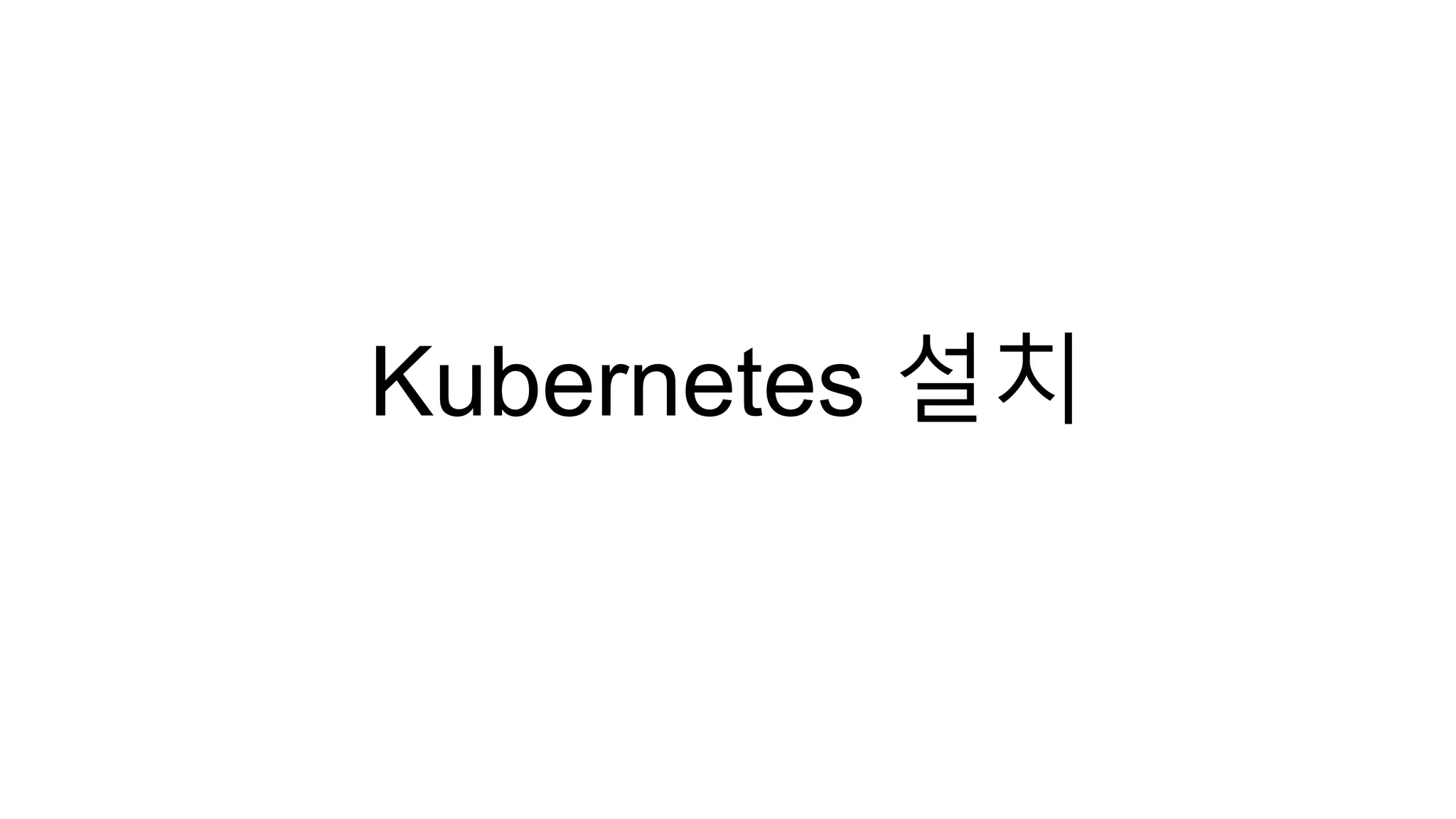
![Kubernetes setup
Install containerd
curl -fsSL https://download.docker.com/linux/ubuntu/gpg | sudo gpg --dearmor -o /usr/share/keyrings/docker.gpg
echo "deb [arch=$(dpkg --print-architecture) signed-by=/usr/share/keyrings/docker.gpg] https://download.docker.com/linux/ubuntu
$(lsb_release -cs) stable" | sudo tee /etc/apt/sources.list.d/docker.list > /dev/null
apt update
apt install containerd.io
systemctl stop containerd
mv /etc/containerd/config.toml /etc/containerd/config.toml.orig
containerd config default > /etc/containerd/config.toml
vi /etc/containerd/config.toml
SystemdCgroup = true
systemctl start containerd
systemctl is-enabled containerd
systemctl status containerd](https://image.slidesharecdn.com/k8spractice2023-230610150819-0475d323/75/k8s-practice-2023-pptx-16-2048.jpg)
![Kubernetes setup
Install kubernetes
apt install apt-transport-https ca-certificates curl -y
# curl -fsSLo /usr/share/keyrings/kubernetes-archive-keyring.gpg https://packages.cloud.google.com/apt/doc/apt-key.gpg
curl https://packages.cloud.google.com/apt/doc/apt-key.gpg | sudo apt-key --keyring /usr/share/keyrings/cloud.google.gpg add -
#echo "deb [signed-by=/usr/share/keyrings/kubernetes-archive-keyring.gpg] https://apt.kubernetes.io/ kubernetes-xenial main" | sudo tee /etc/apt/sources.list.d/kubernetes.list
echo "deb [signed-by=/usr/share/keyrings/cloud.google.gpg] https://apt.kubernetes.io/ kubernetes-xenial main" | sudo tee /etc/apt/sources.list.d/kubernetes.list
apt update
apt install kubelet kubeadm kubectl
apt-mark hold kubelet kubeadm kubectl # 패키지가 자동으로 업그레이드 되지 않도록 고정
kubeadm version
kubelet --version
kubectl version
https://kubernetes.io/docs/setup/production-environment/tools/kubeadm/install-kubeadm/](https://image.slidesharecdn.com/k8spractice2023-230610150819-0475d323/75/k8s-practice-2023-pptx-17-2048.jpg)
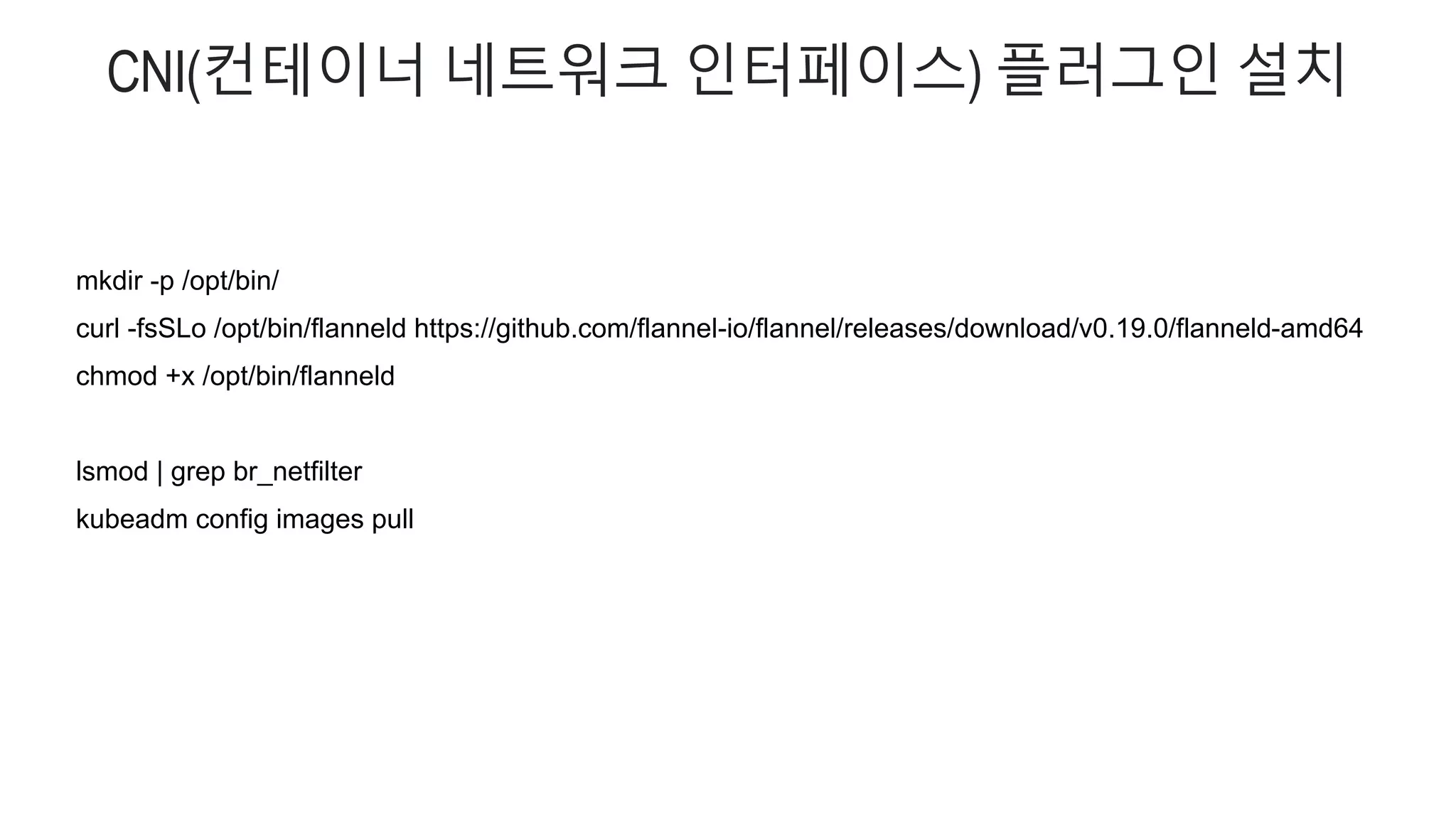
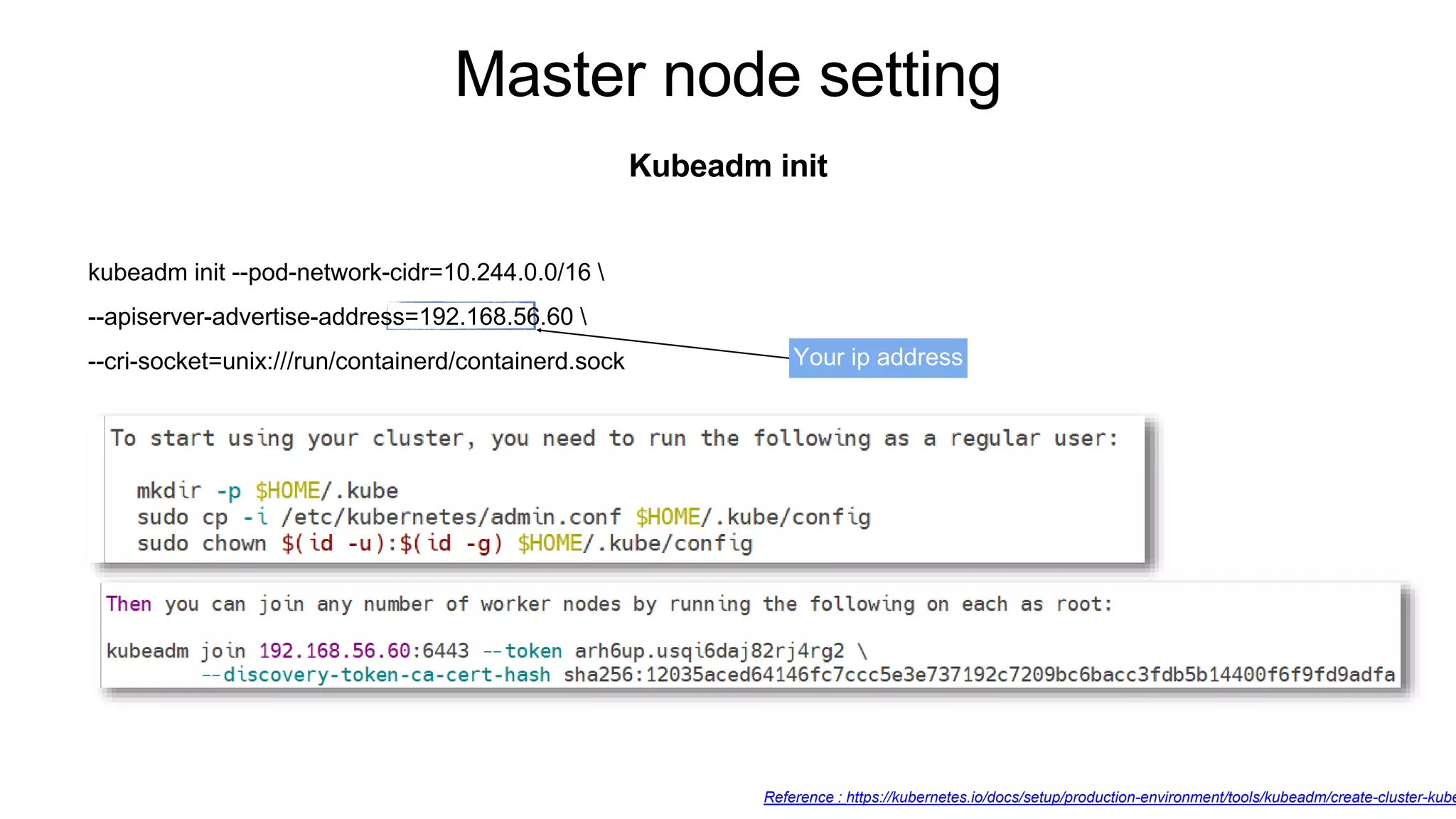
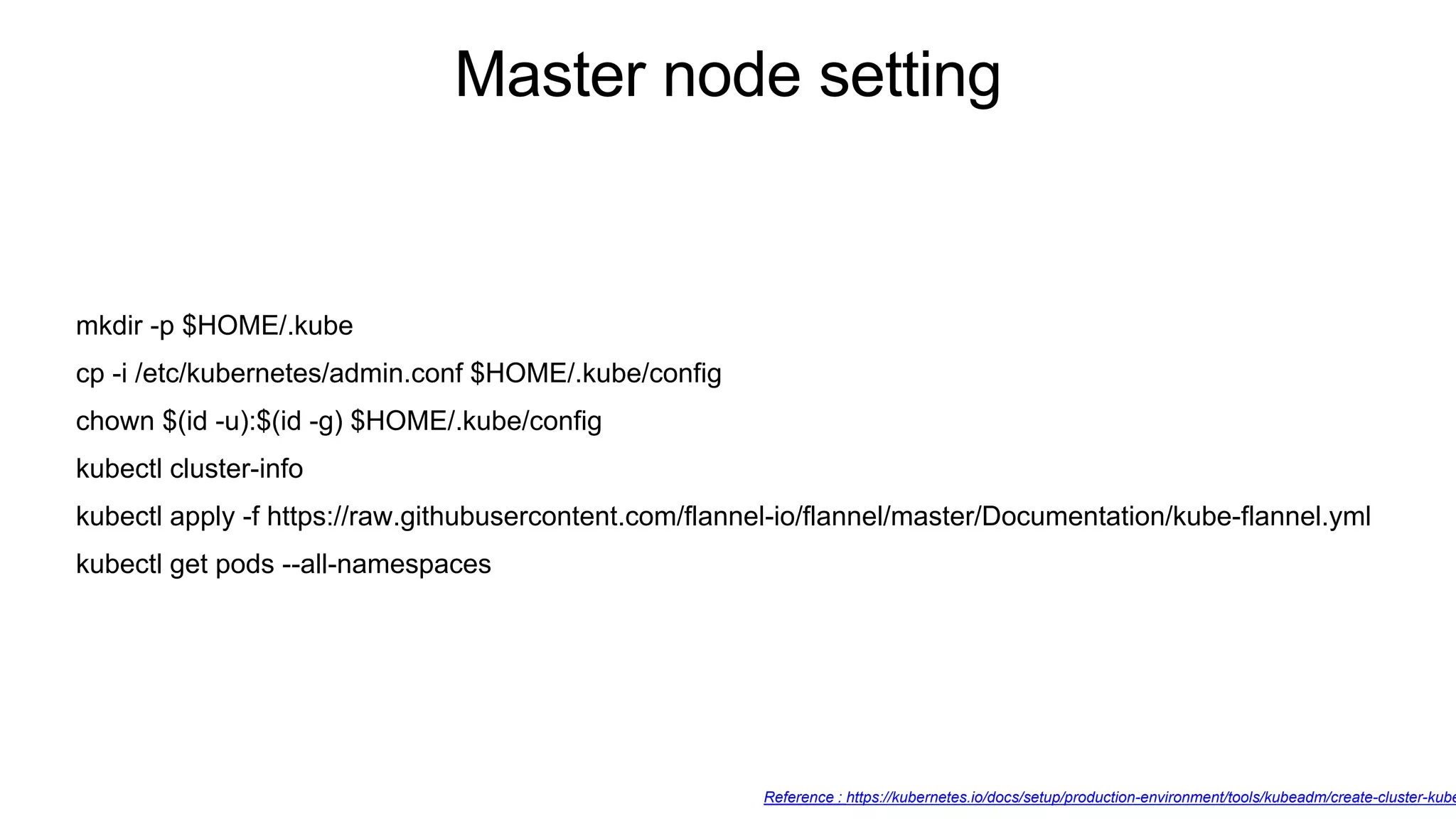
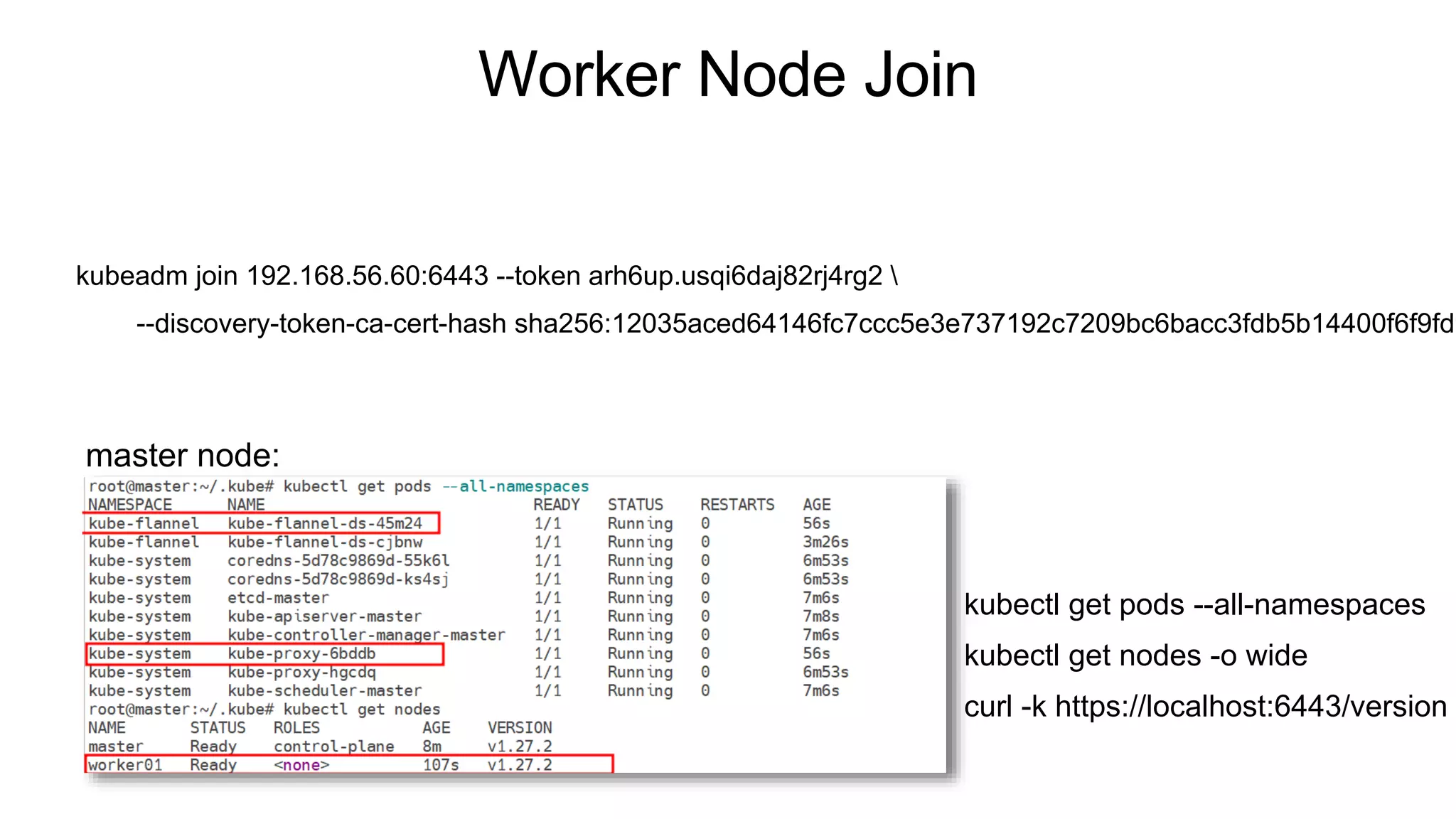
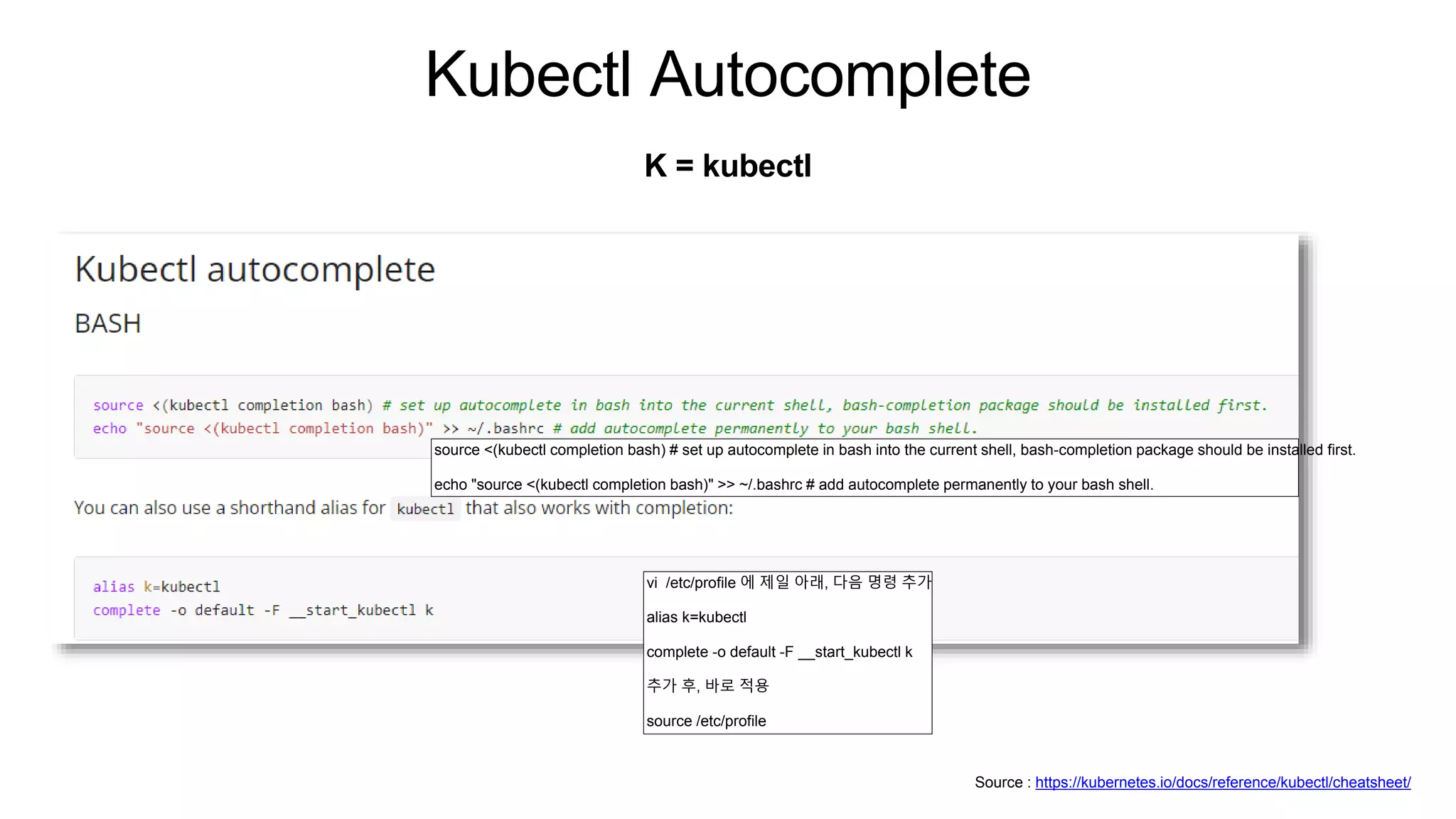

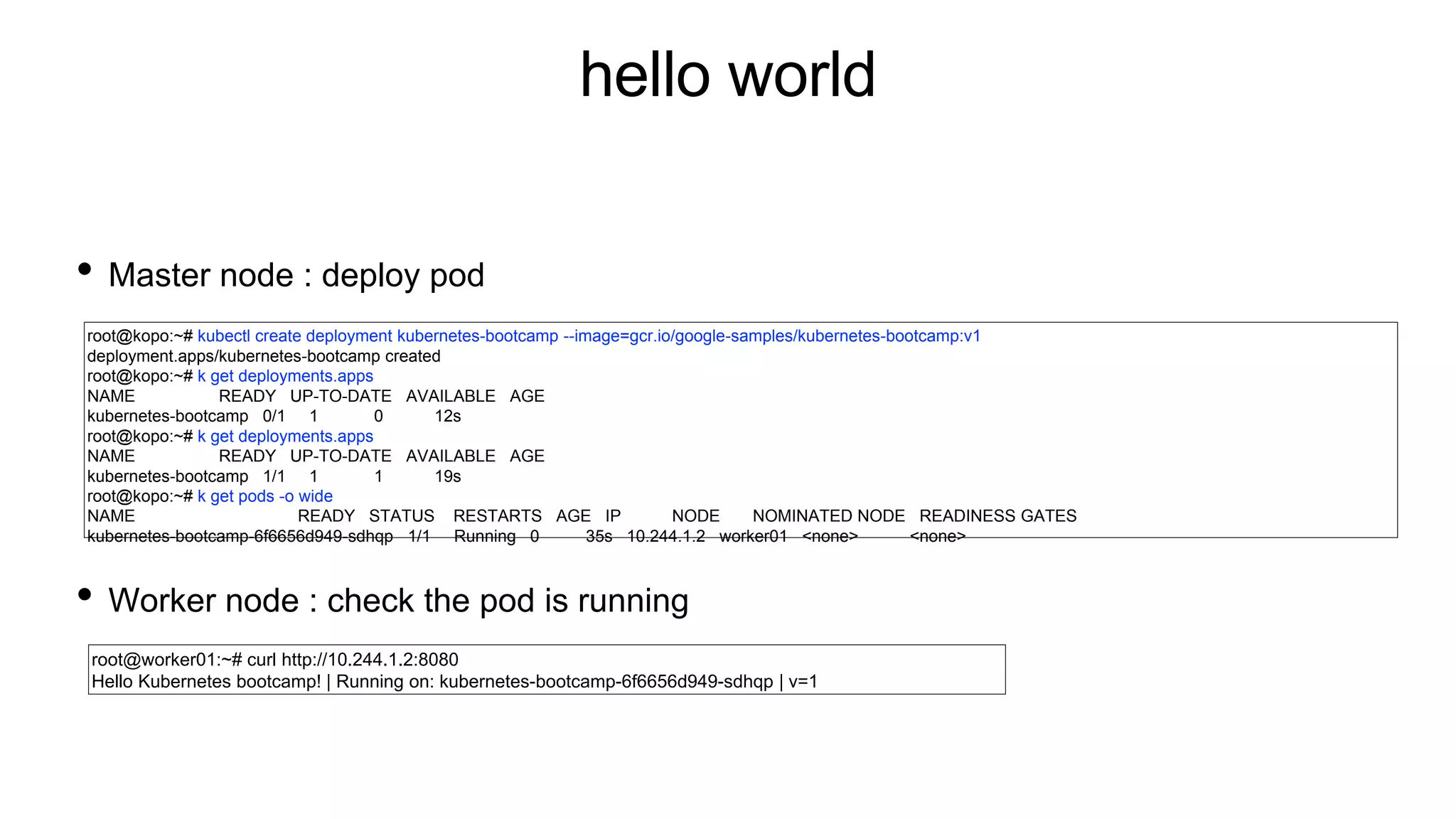

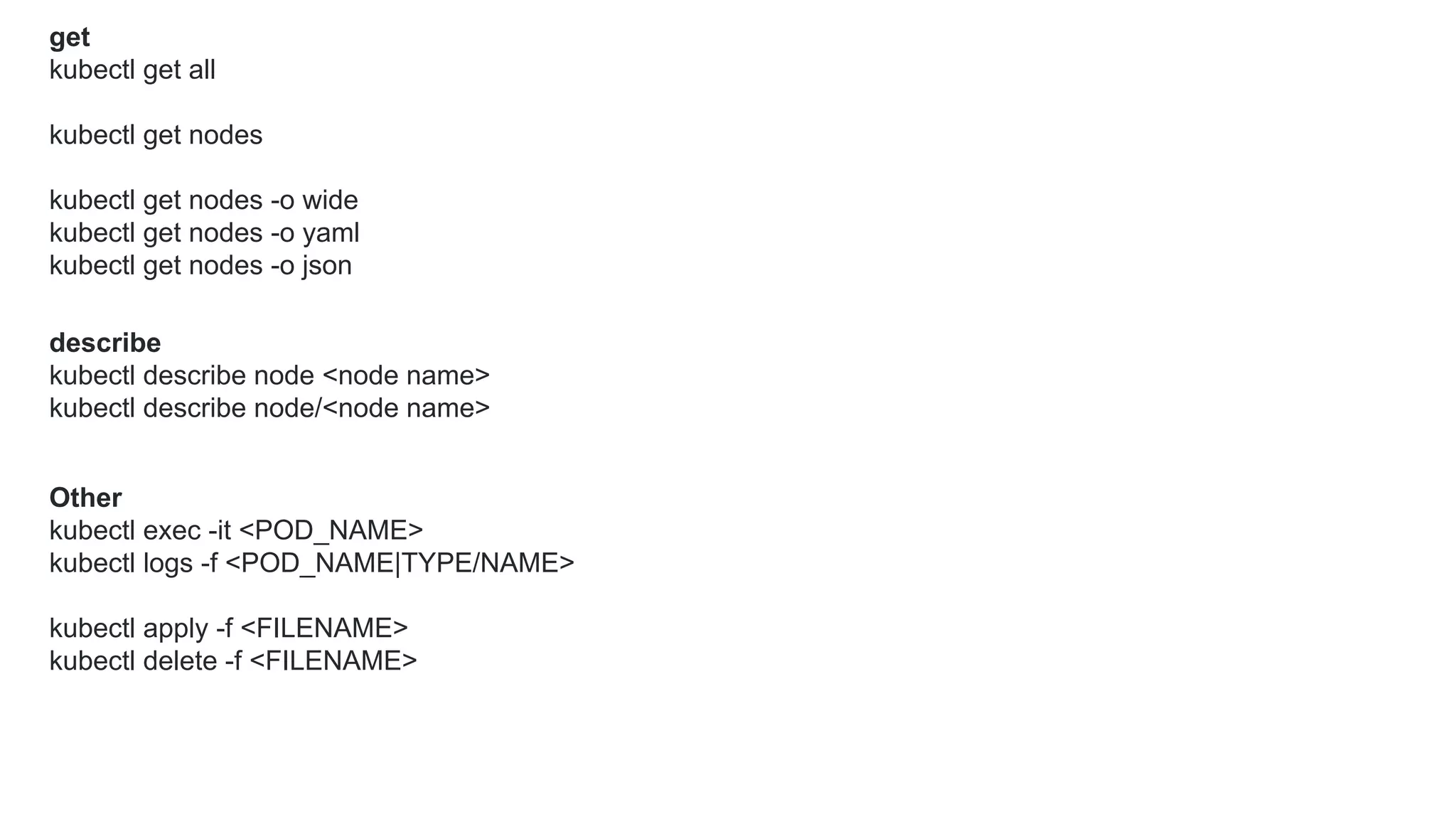
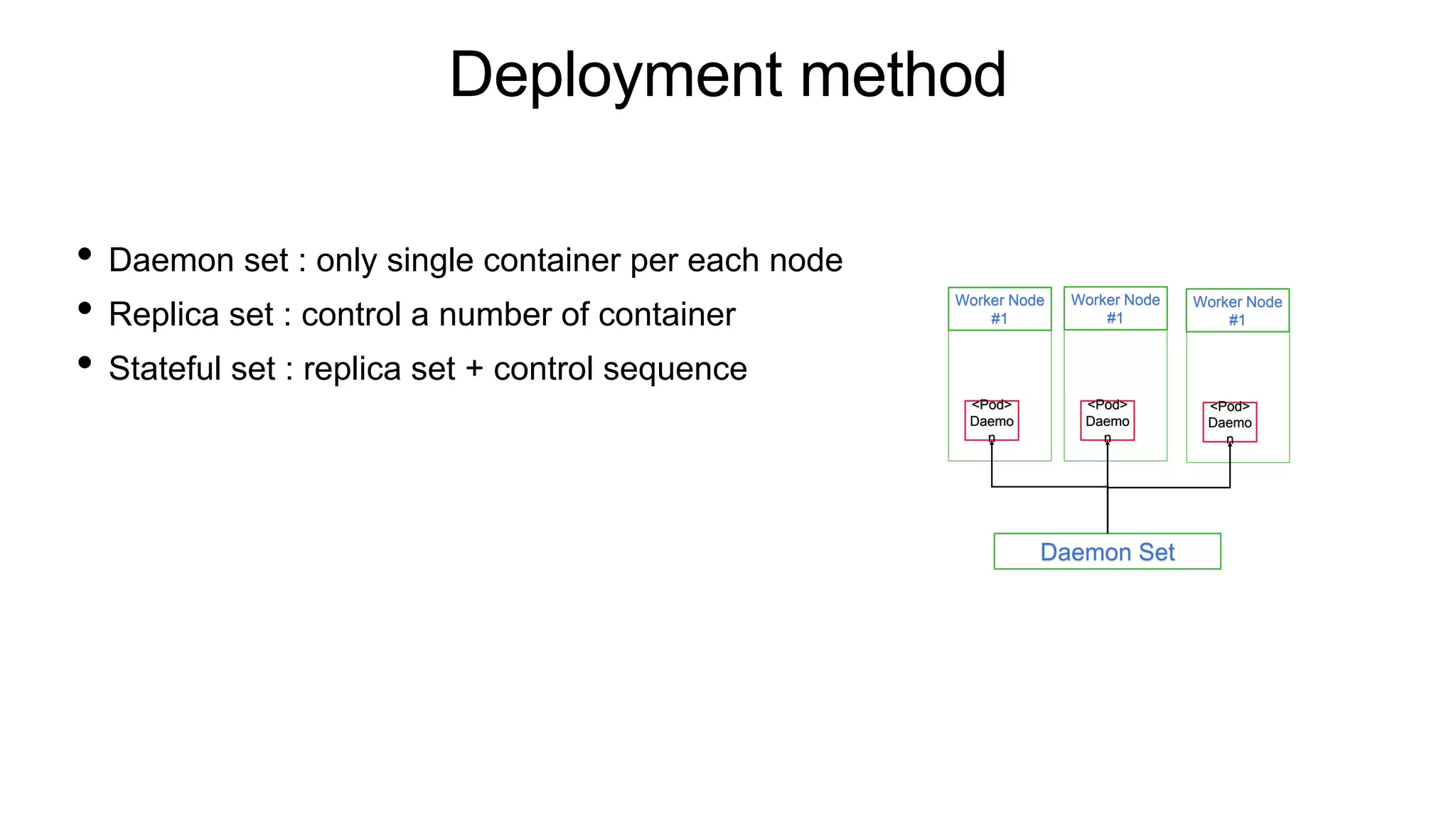

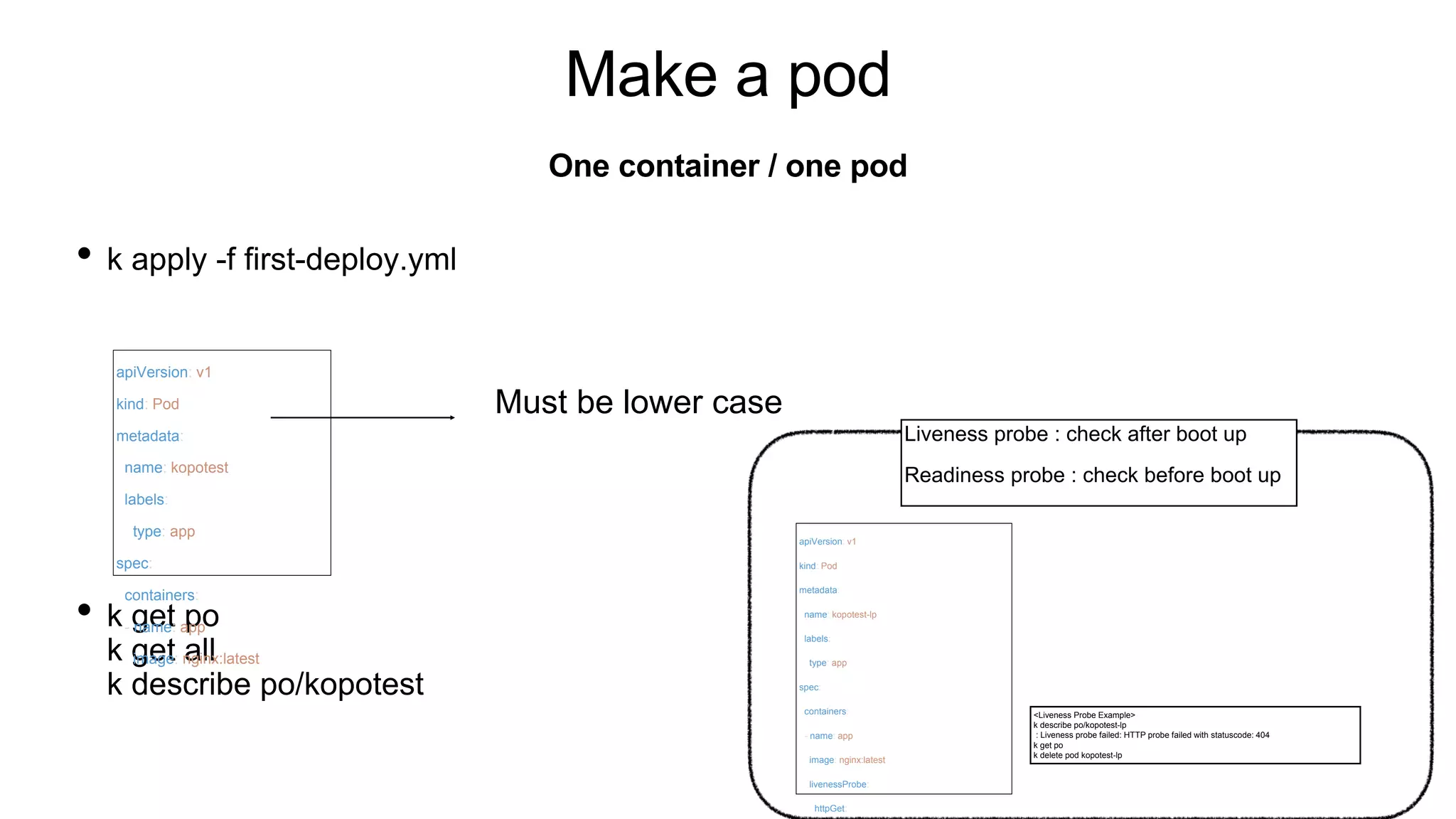
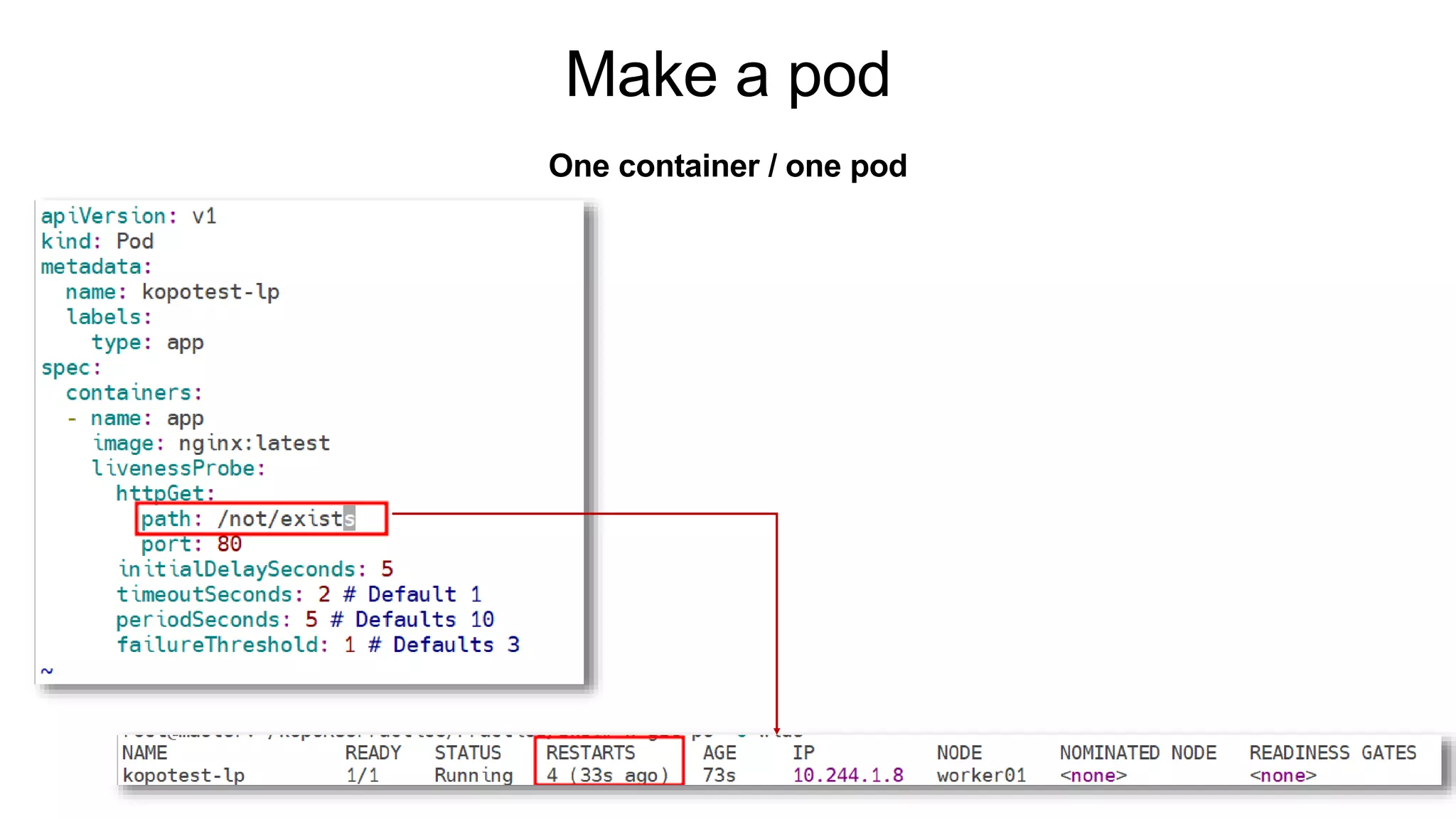
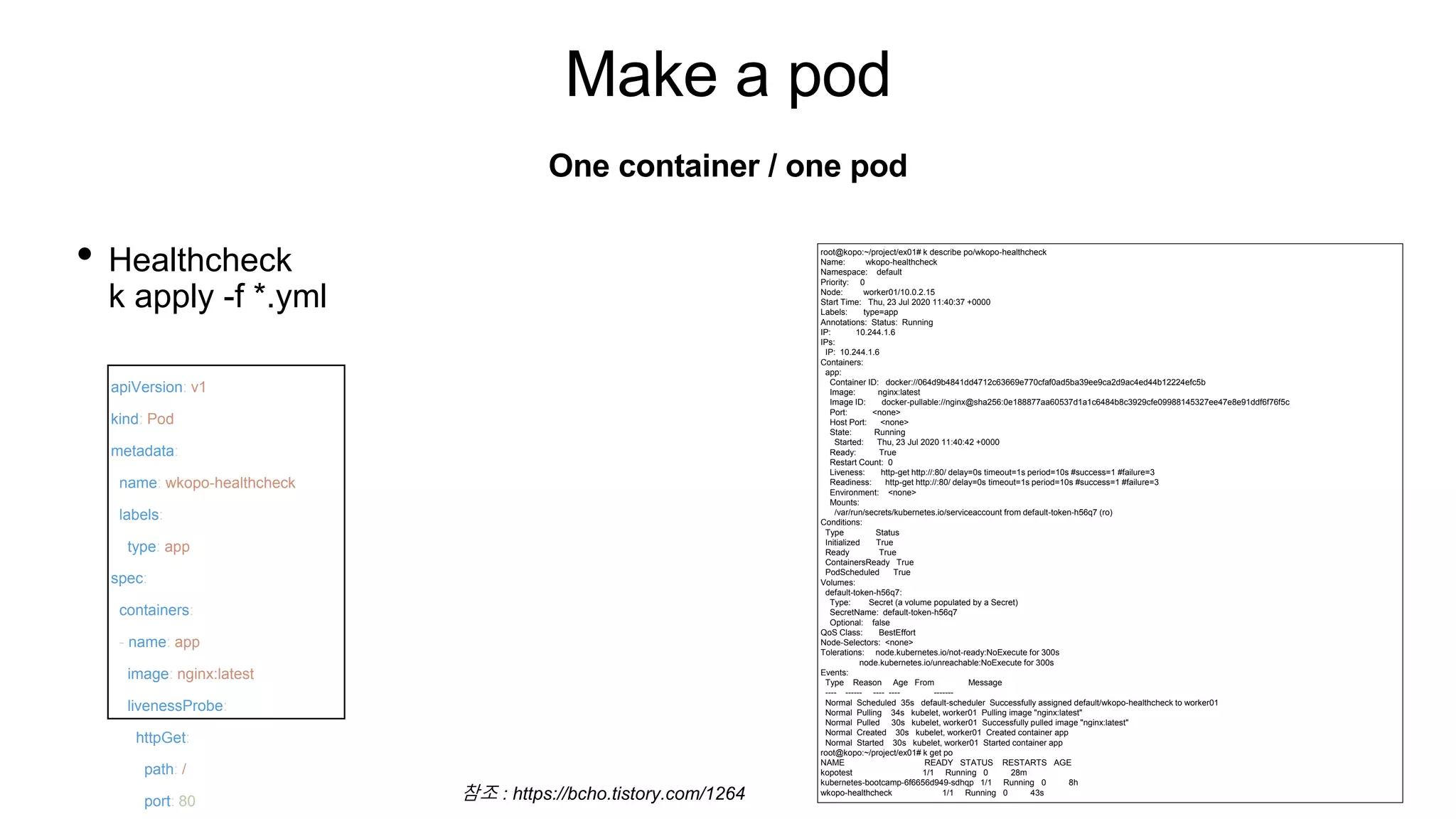
![Make a pod
• K apply -f multi-container.yml
Multi container / one pod
apiVersion: v1
kind: Pod
metadata:
name: two-containers
spec:
restartPolicy: Never
volumes:
- name: shared-data
emptyDir: {}
containers:
- name: nginx-container
image: nginx
volumeMounts:
- name: shared-data
root@kopo:~/project/ex02# k get pod
NAME READY STATUS RESTARTS AGE
kubernetes-bootcamp-6f6656d949-sdhqp 1/1 Running 0 10h
two-containers 1/2 NotReady 0 34m
root@kopo:~/project/ex02# k logs po/two-containers
error: a container name must be specified for pod two-containers, choose one of: [nginx-container debian-container]
root@kopo:~/project/ex02# k logs po/two-containers nginx-container
/docker-entrypoint.sh: /docker-entrypoint.d/ is not empty, will attempt to perform configuration
/docker-entrypoint.sh: Looking for shell scripts in /docker-entrypoint.d/
/docker-entrypoint.sh: Launching /docker-entrypoint.d/10-listen-on-ipv6-by-default.sh
10-listen-on-ipv6-by-default.sh: Getting the checksum of /etc/nginx/conf.d/default.conf
10-listen-on-ipv6-by-default.sh: Enabled listen on IPv6 in /etc/nginx/conf.d/default.conf
/docker-entrypoint.sh: Launching /docker-entrypoint.d/20-envsubst-on-templates.sh
/docker-entrypoint.sh: Configuration complete; ready for start up
127.0.0.1 - - [23/Jul/2020:12:52:56 +0000] "GET / HTTP/1.1" 200 42 "-" "curl/7.64.0" "-"
Source : https://kubernetes.io/docs/tasks/access-application-cluster/communicate-containers-same-pod-shared-volume/](https://image.slidesharecdn.com/k8spractice2023-230610150819-0475d323/75/k8s-practice-2023-pptx-32-2048.jpg)
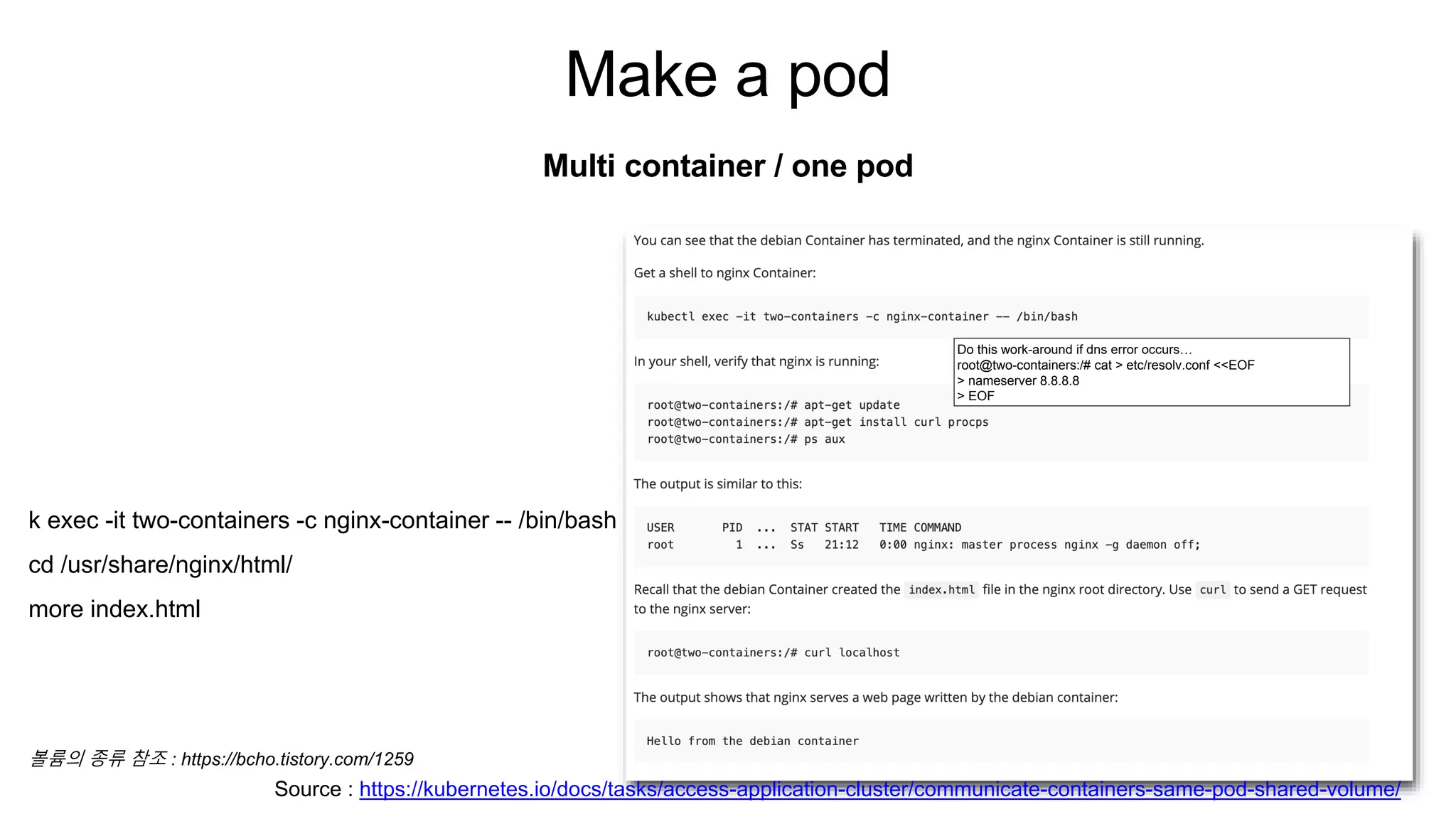

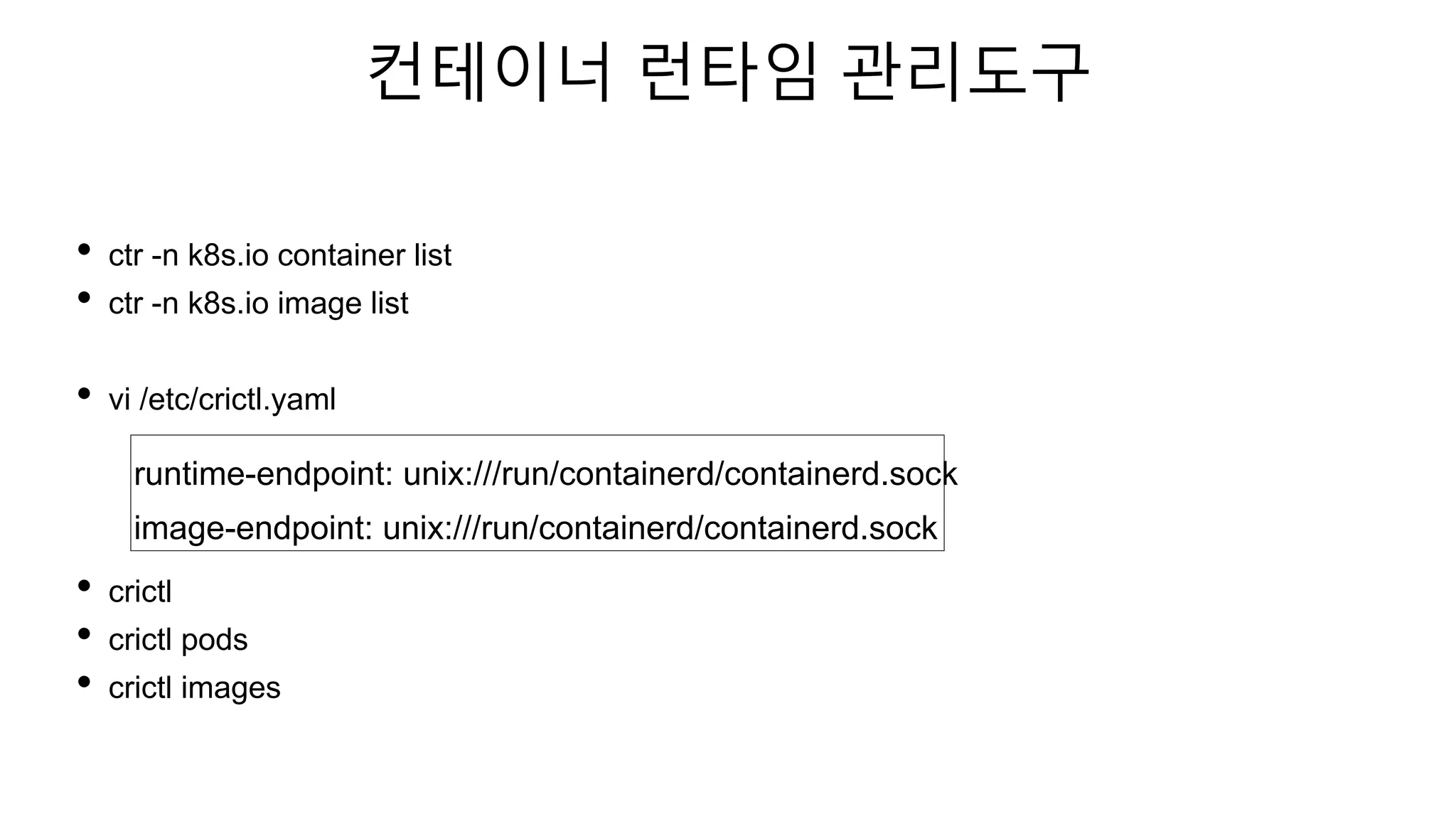
![[참고] docker VS containerd
source : https://kubernetes.io/blog/2018/05/24/kubernetes-containerd-integration-goes-ga/#containerd-1-0-cri-containerd-end-of-li](https://image.slidesharecdn.com/k8spractice2023-230610150819-0475d323/75/k8s-practice-2023-pptx-36-2048.jpg)
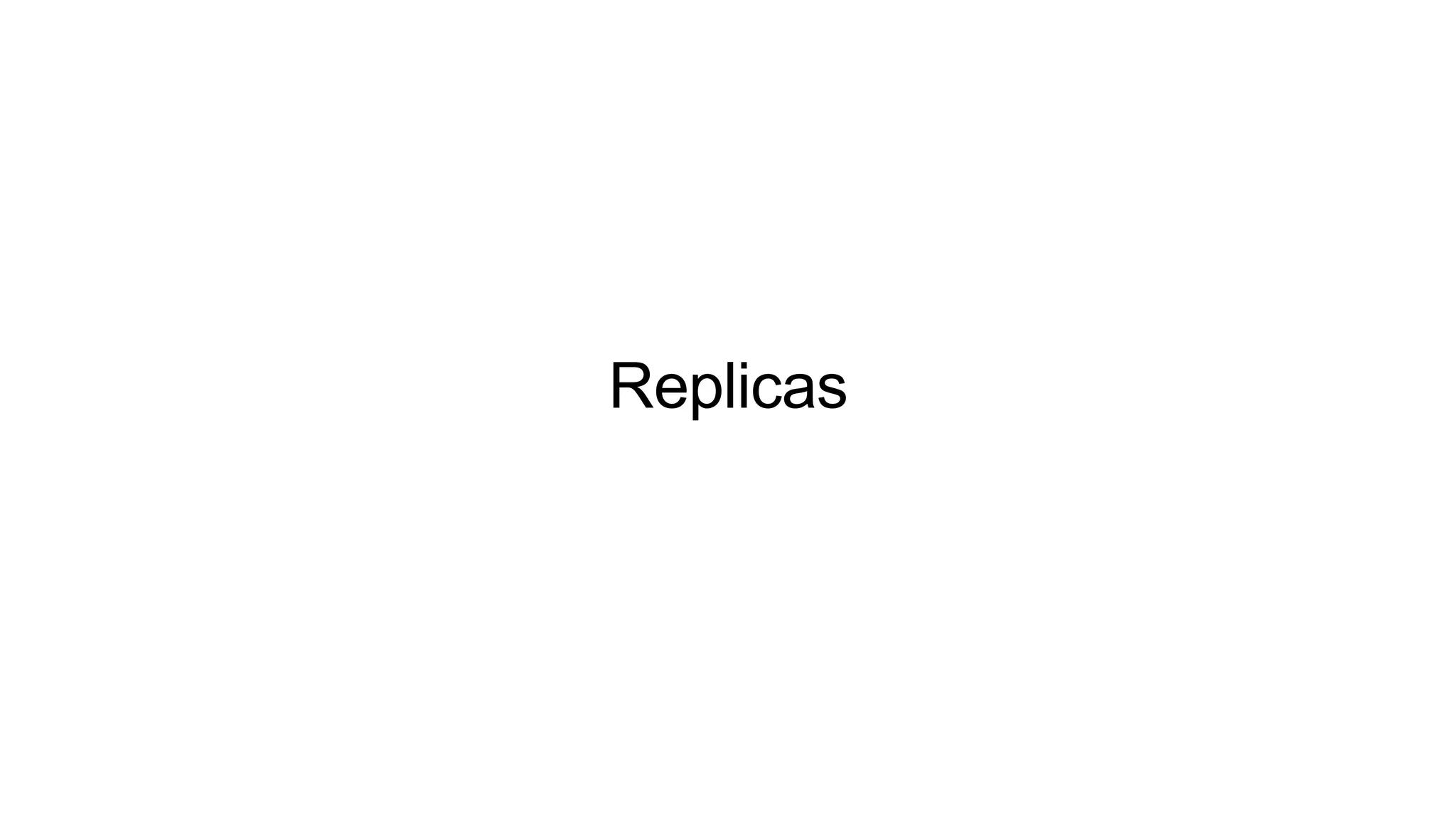
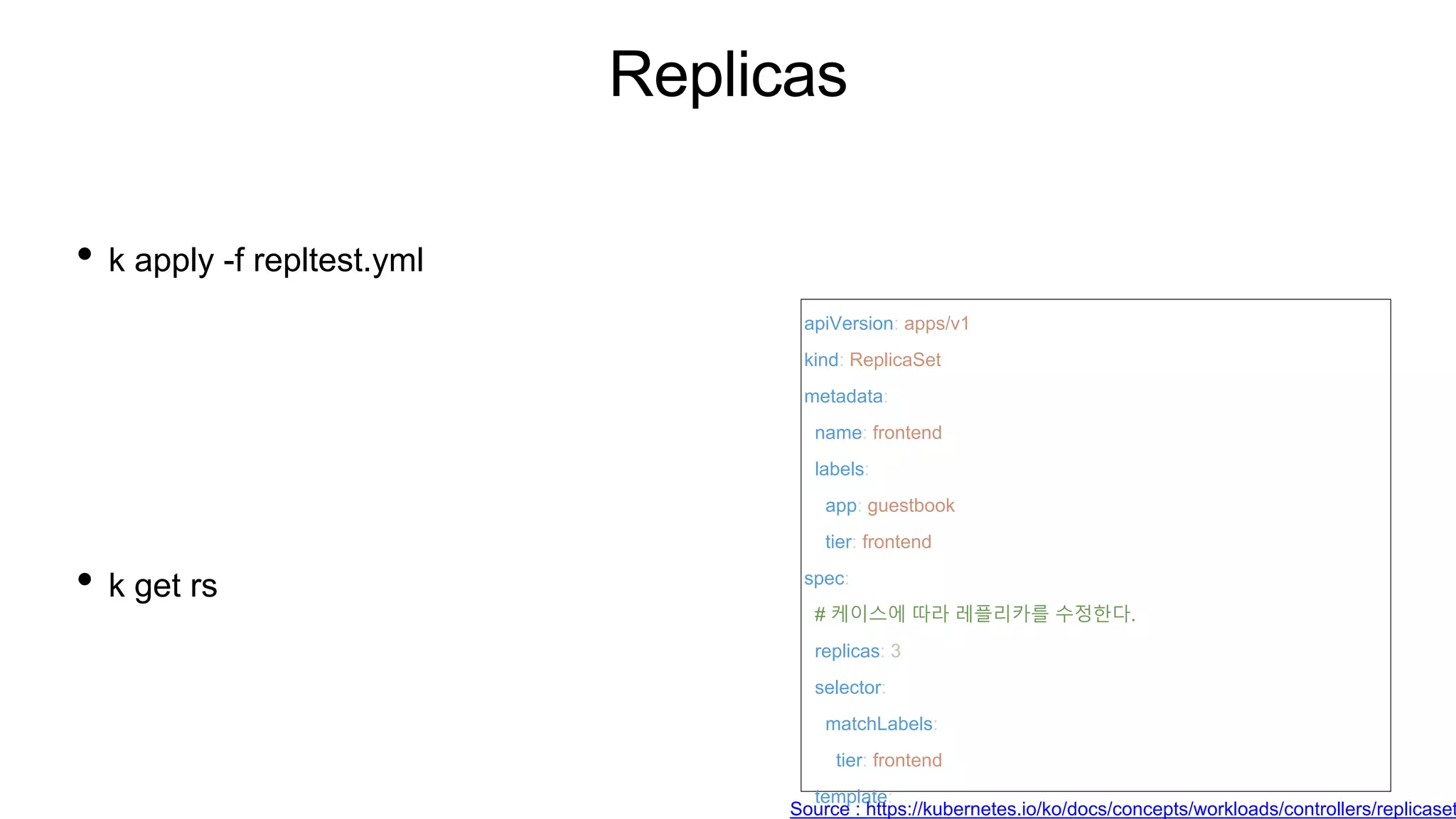
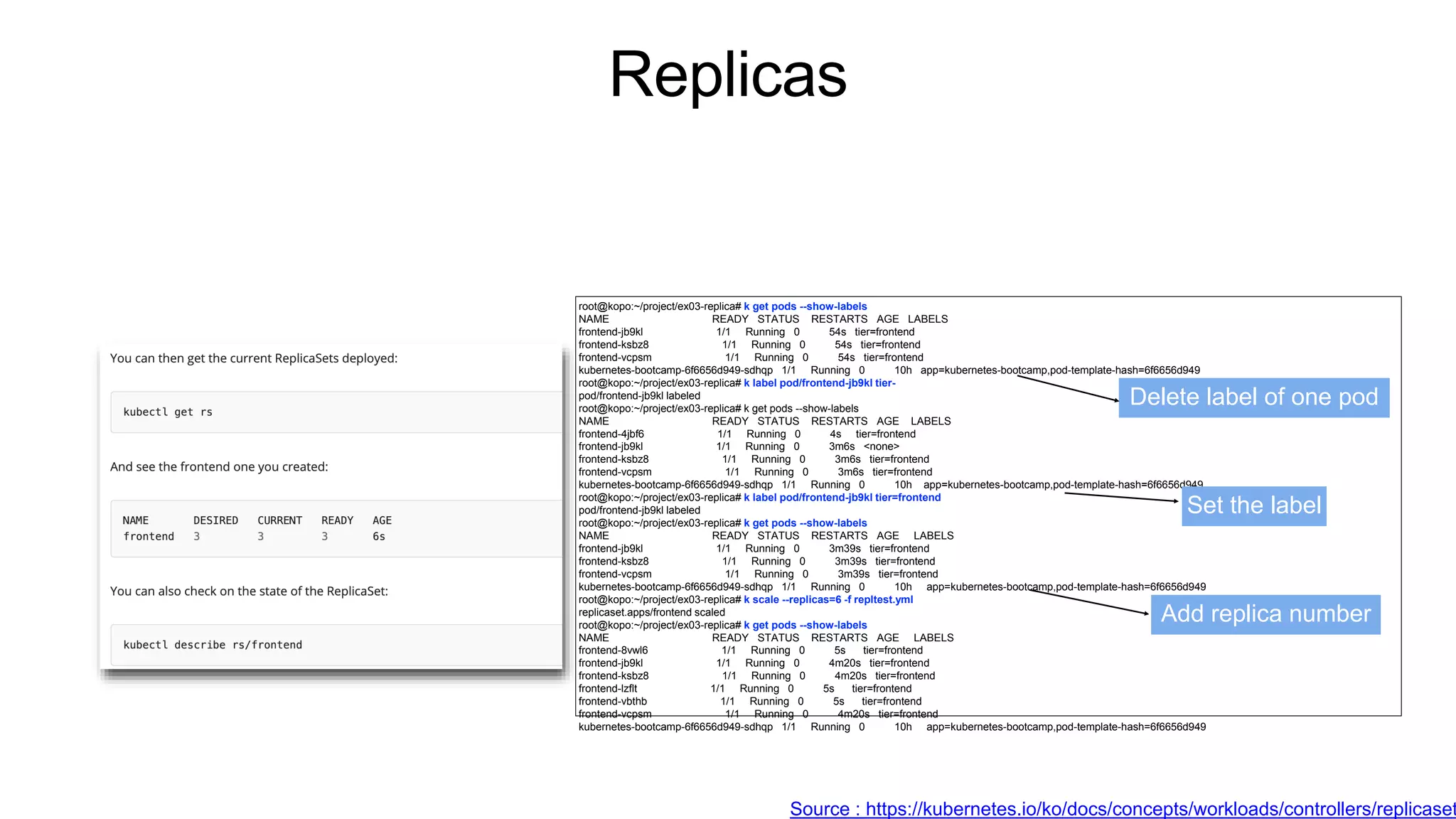
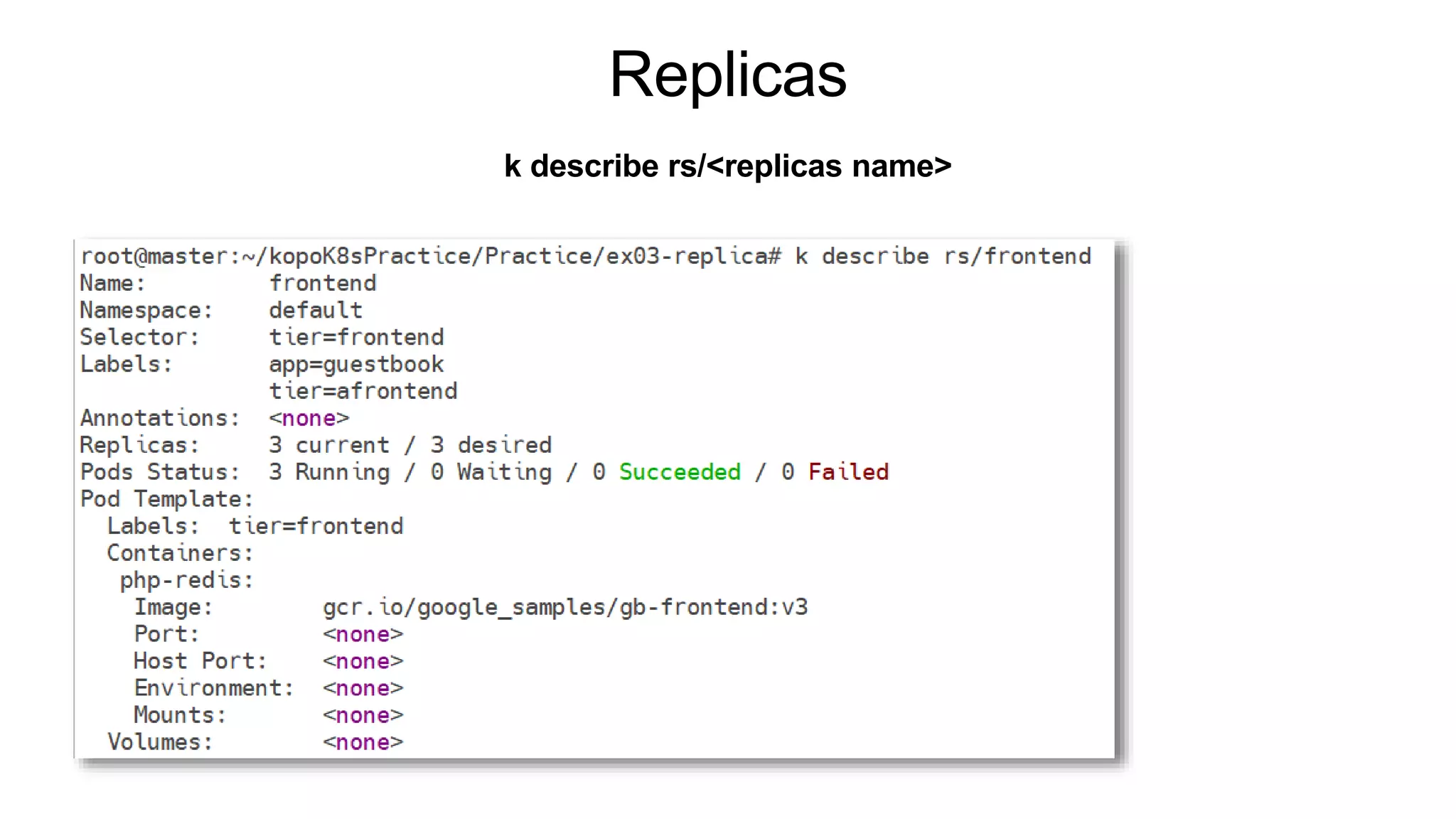
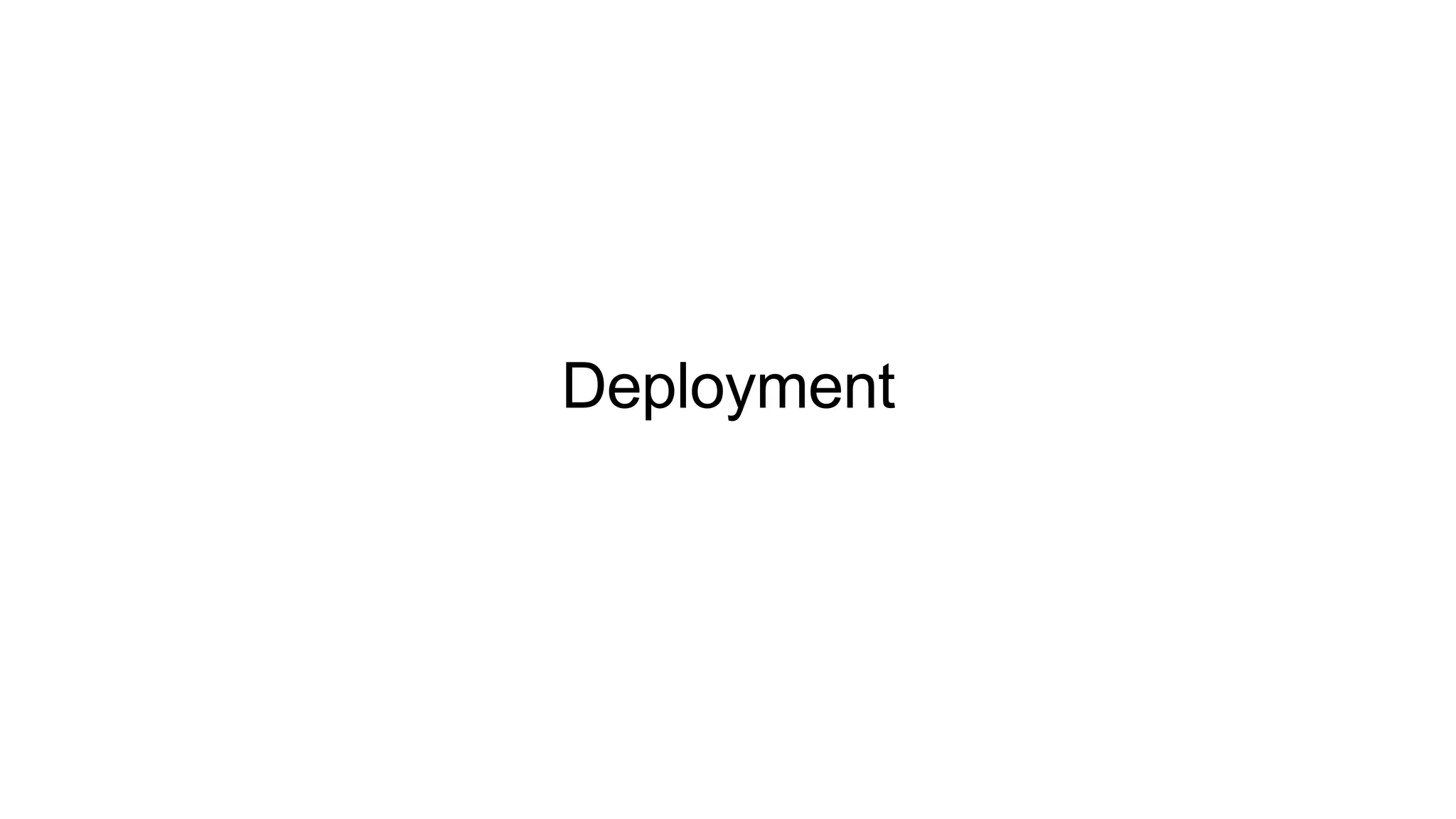
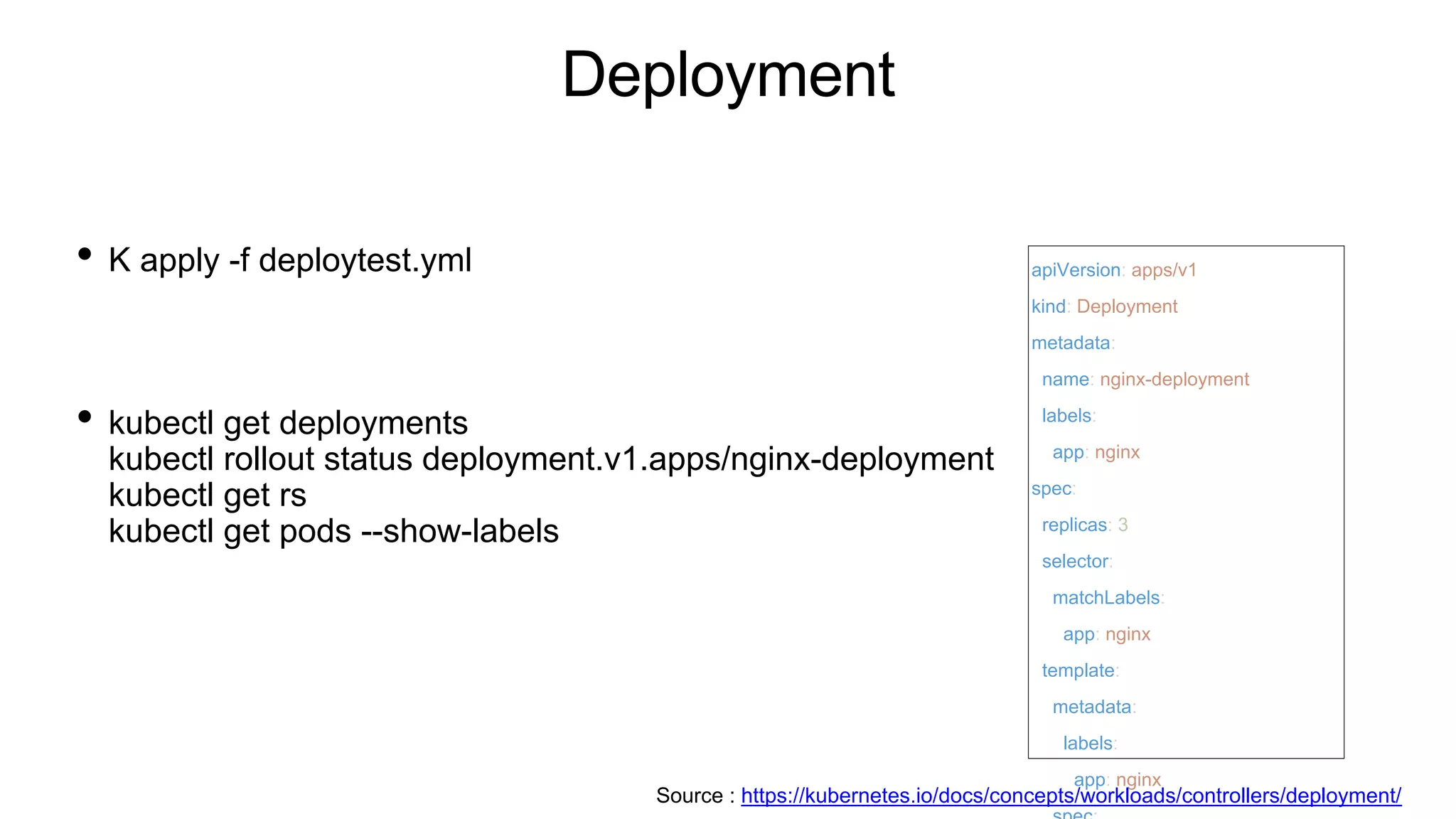
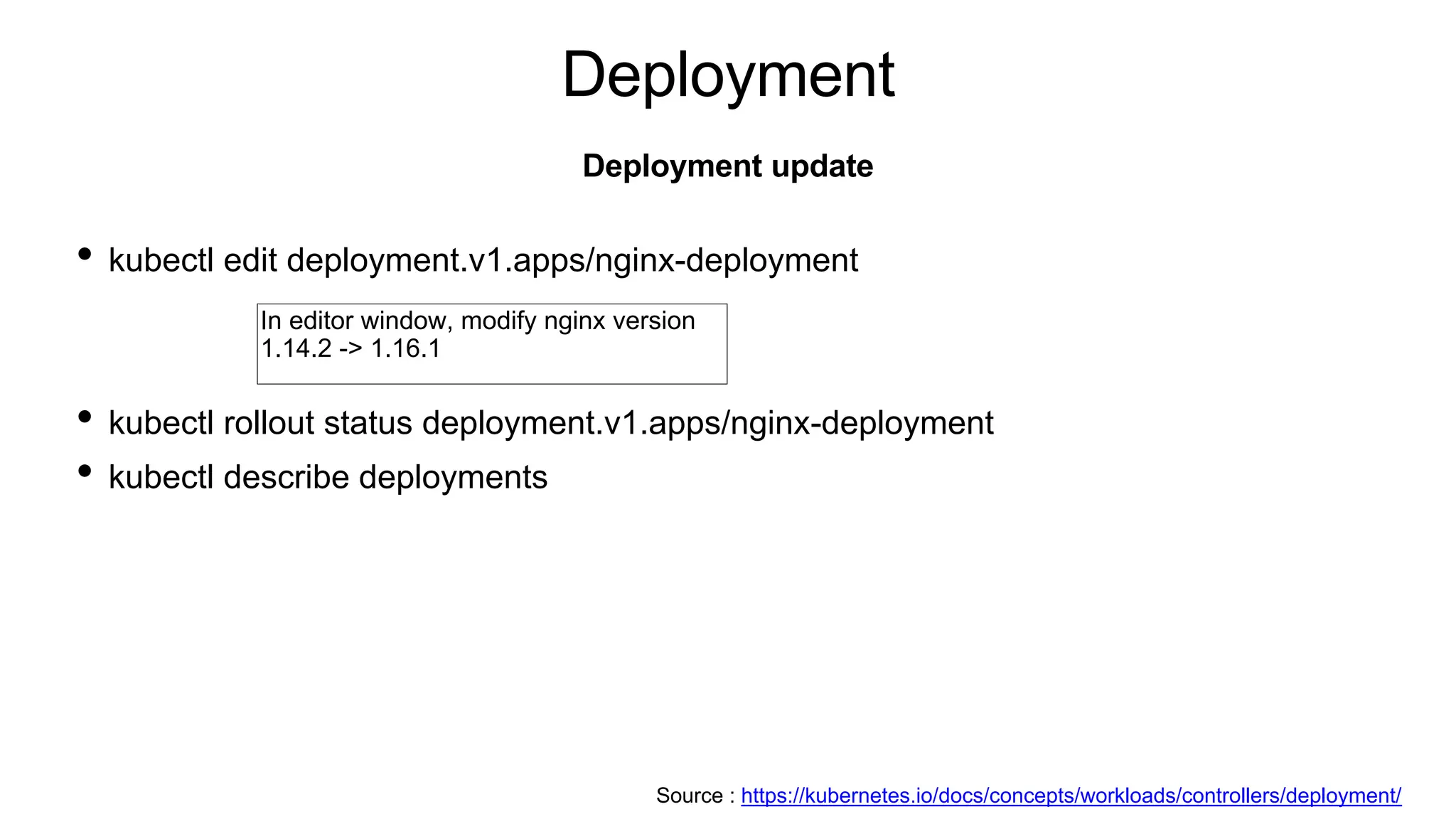
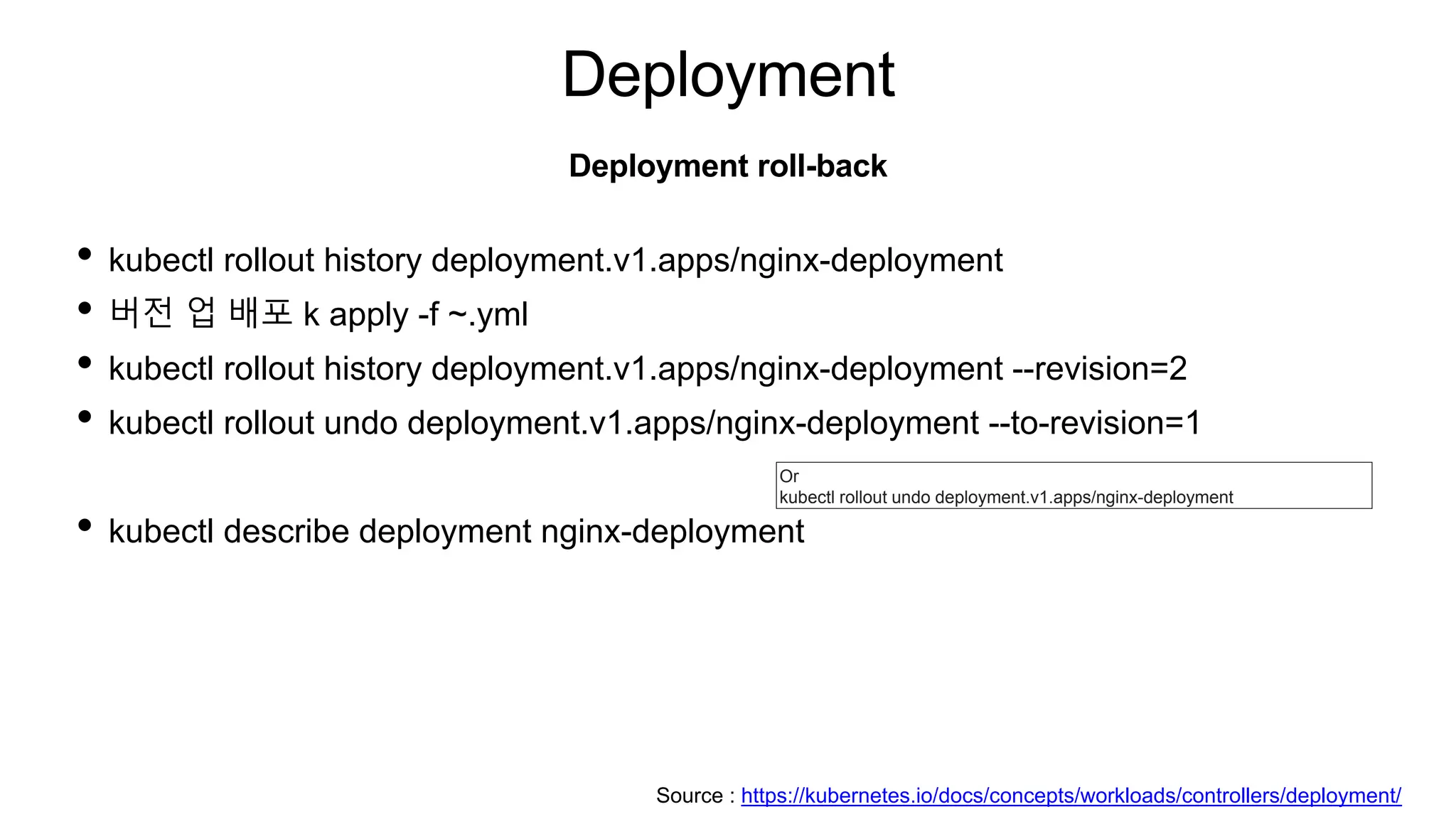
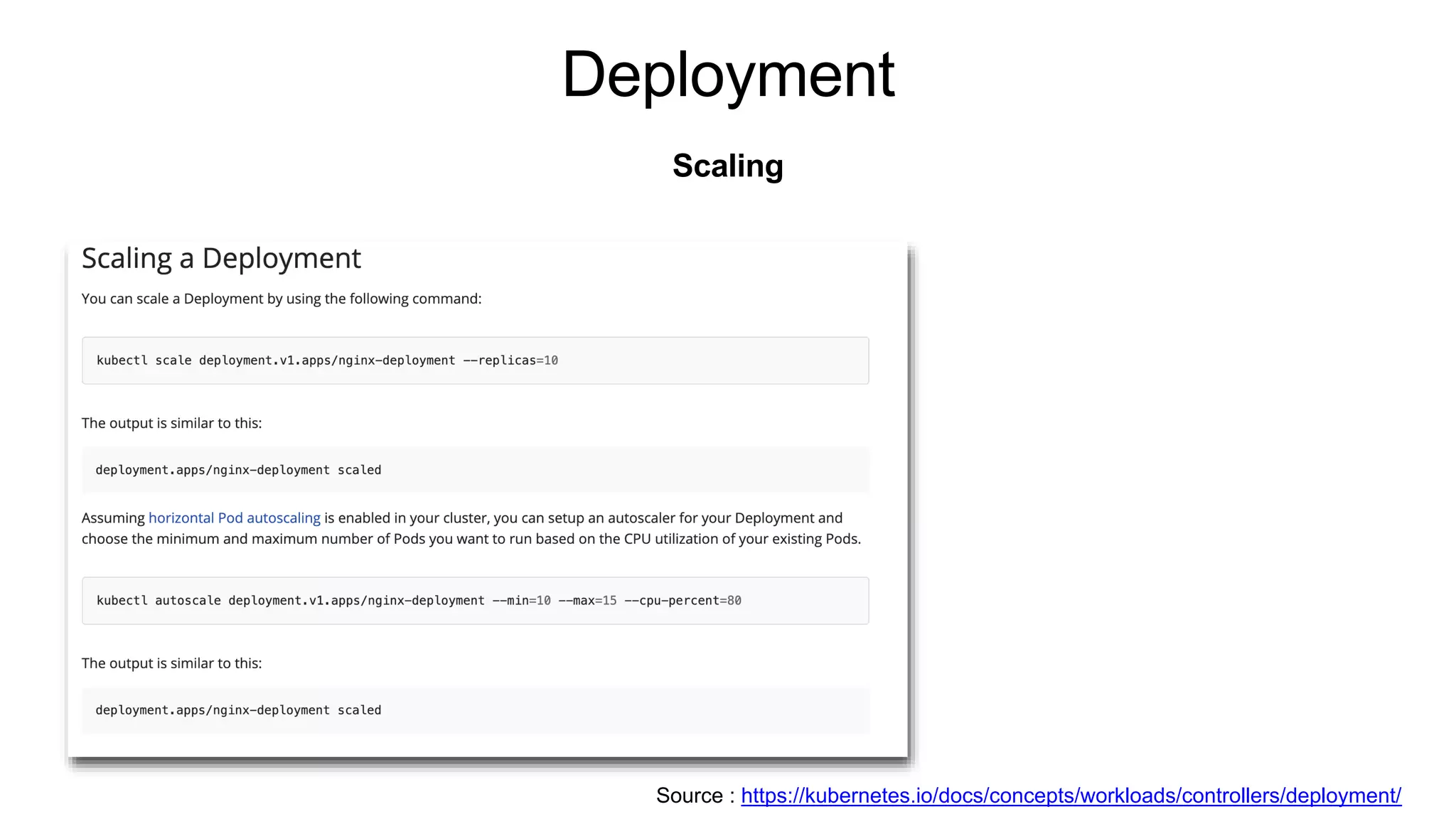
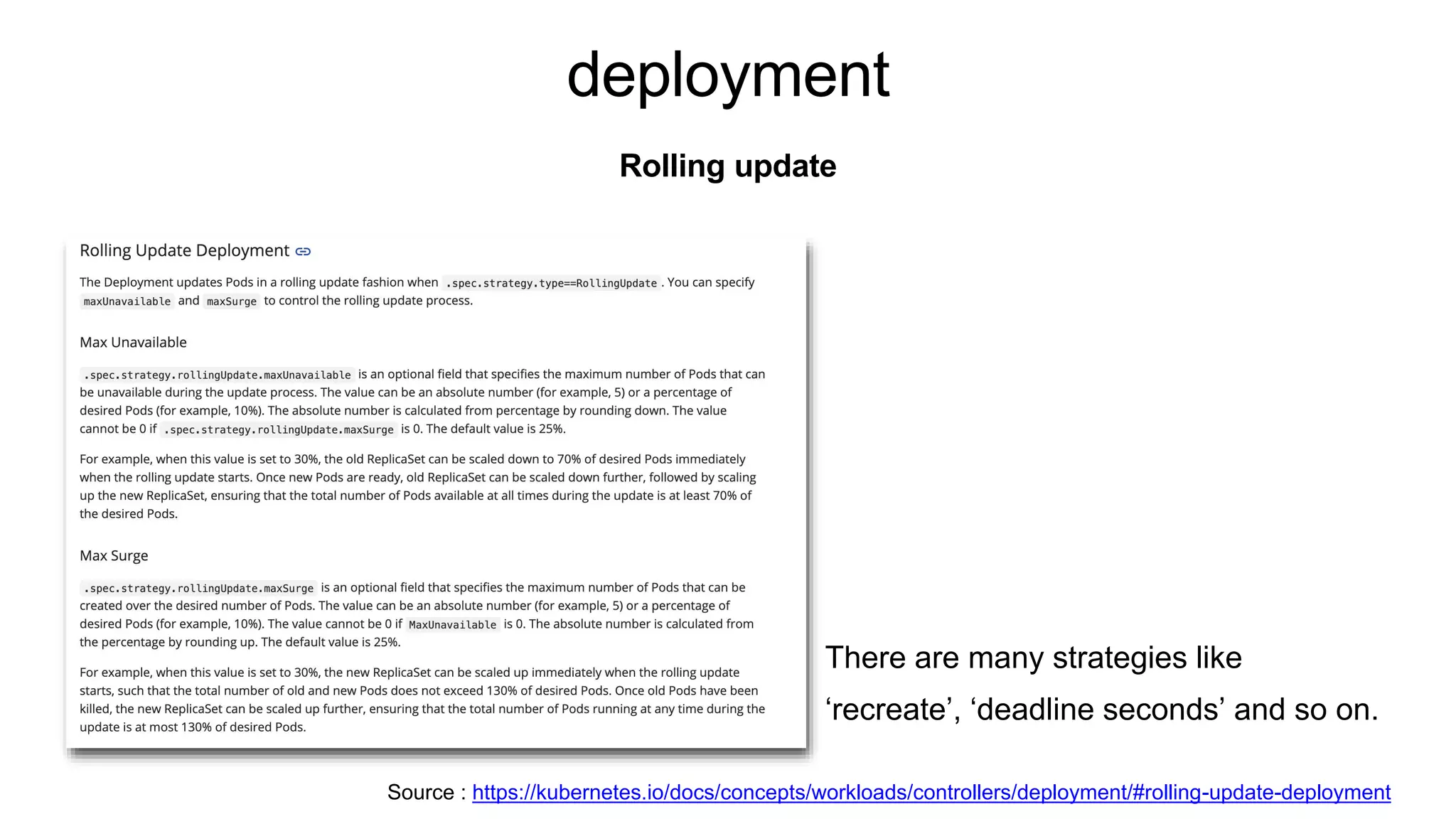
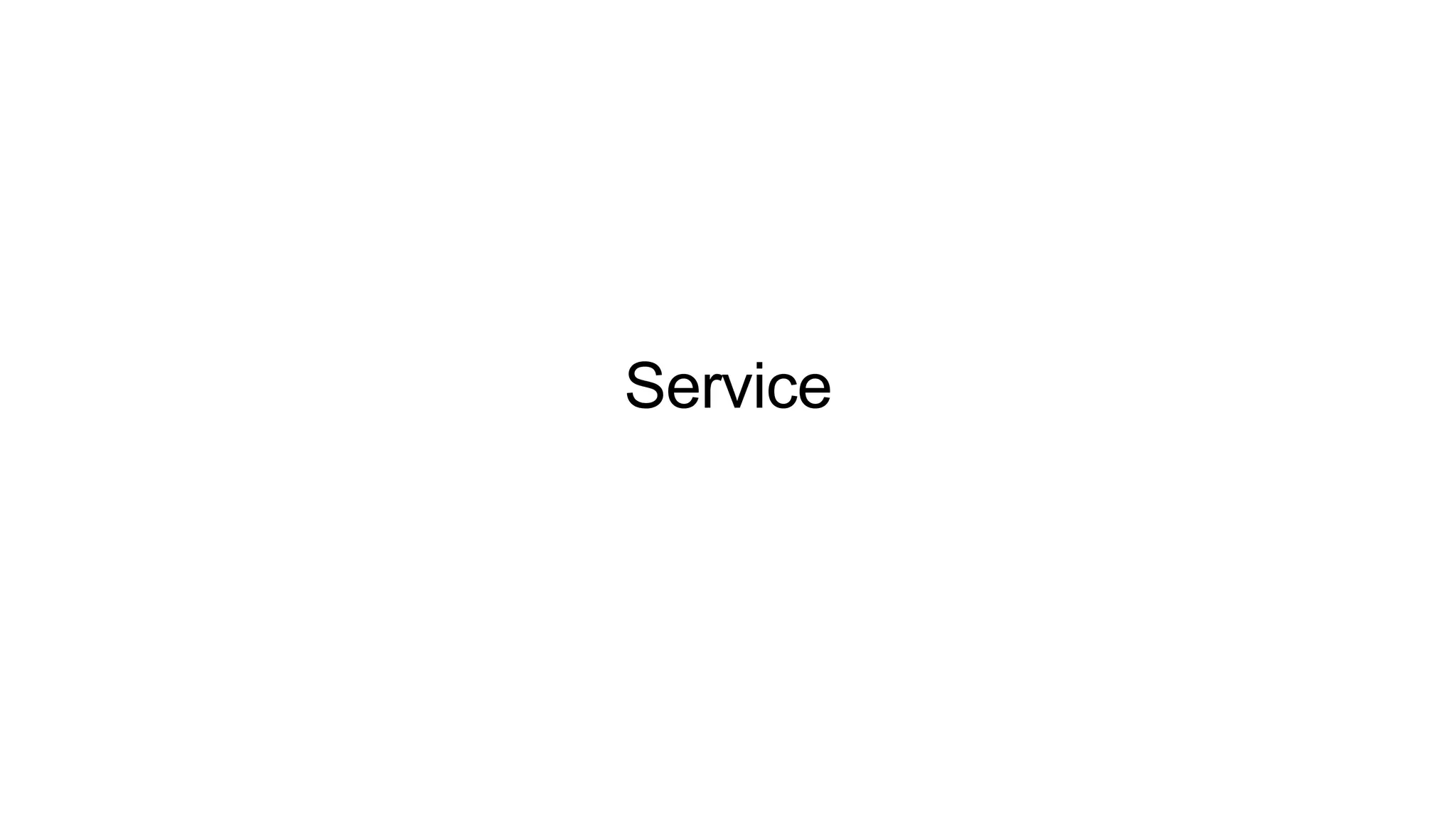
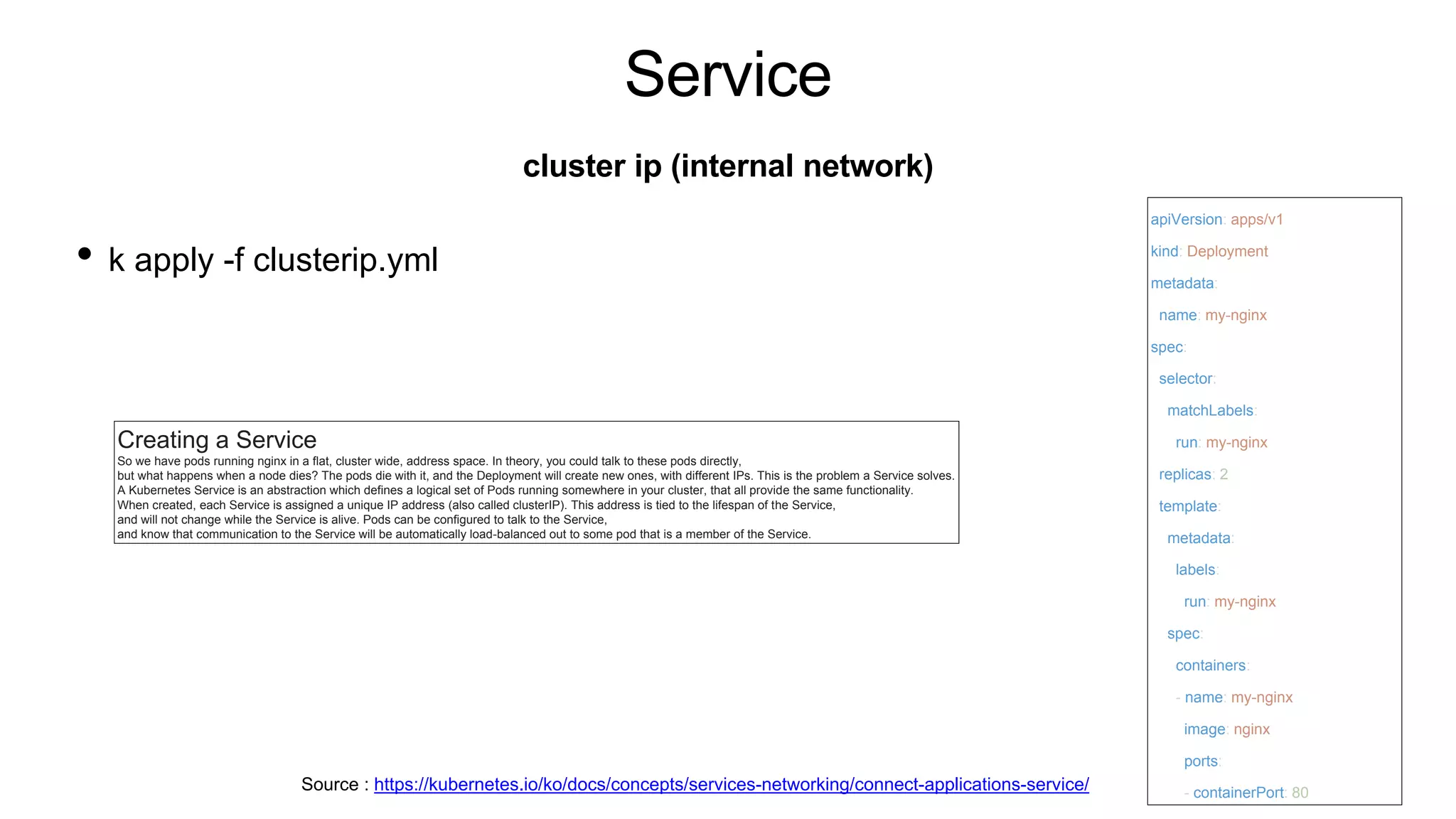
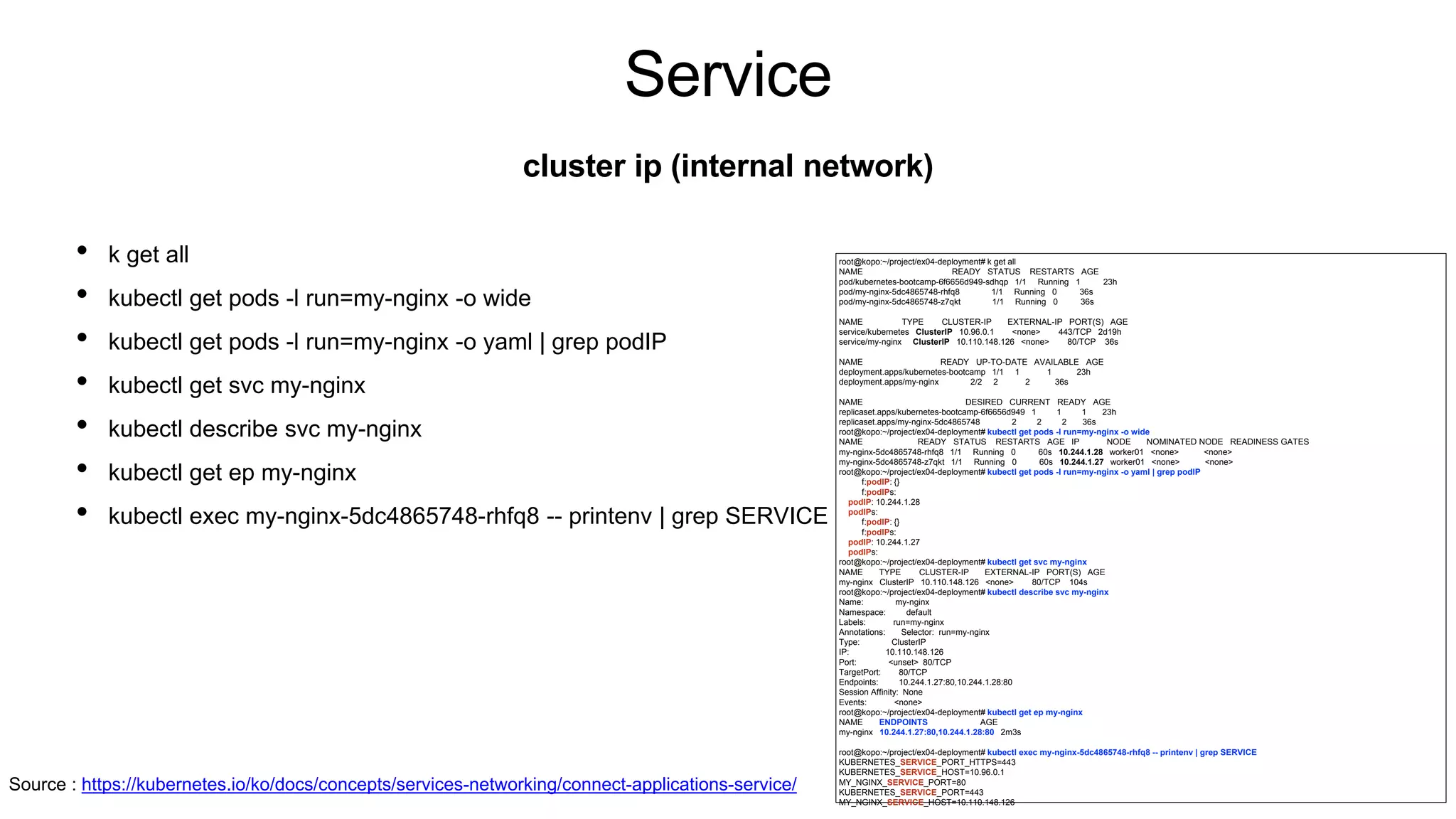
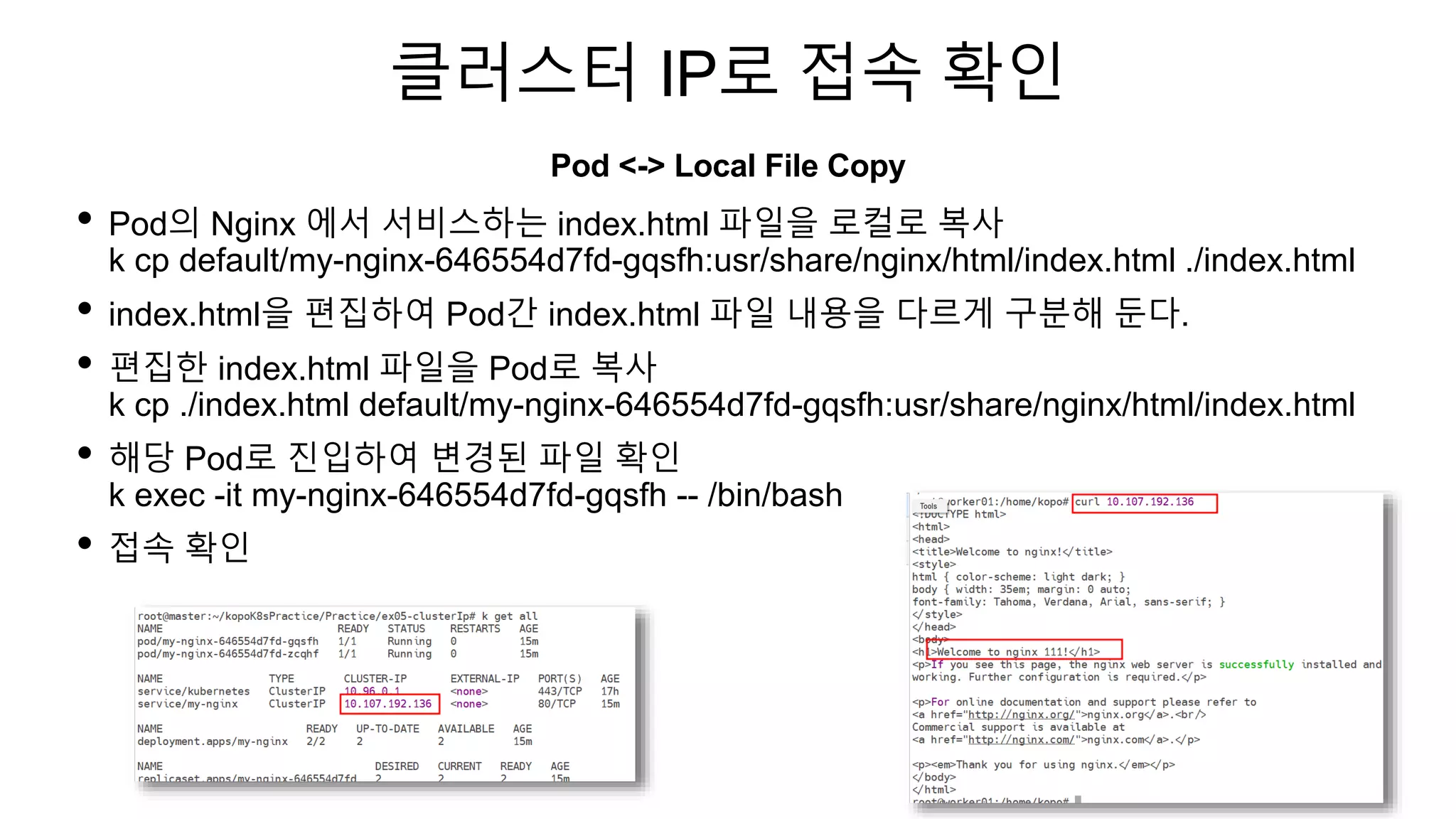
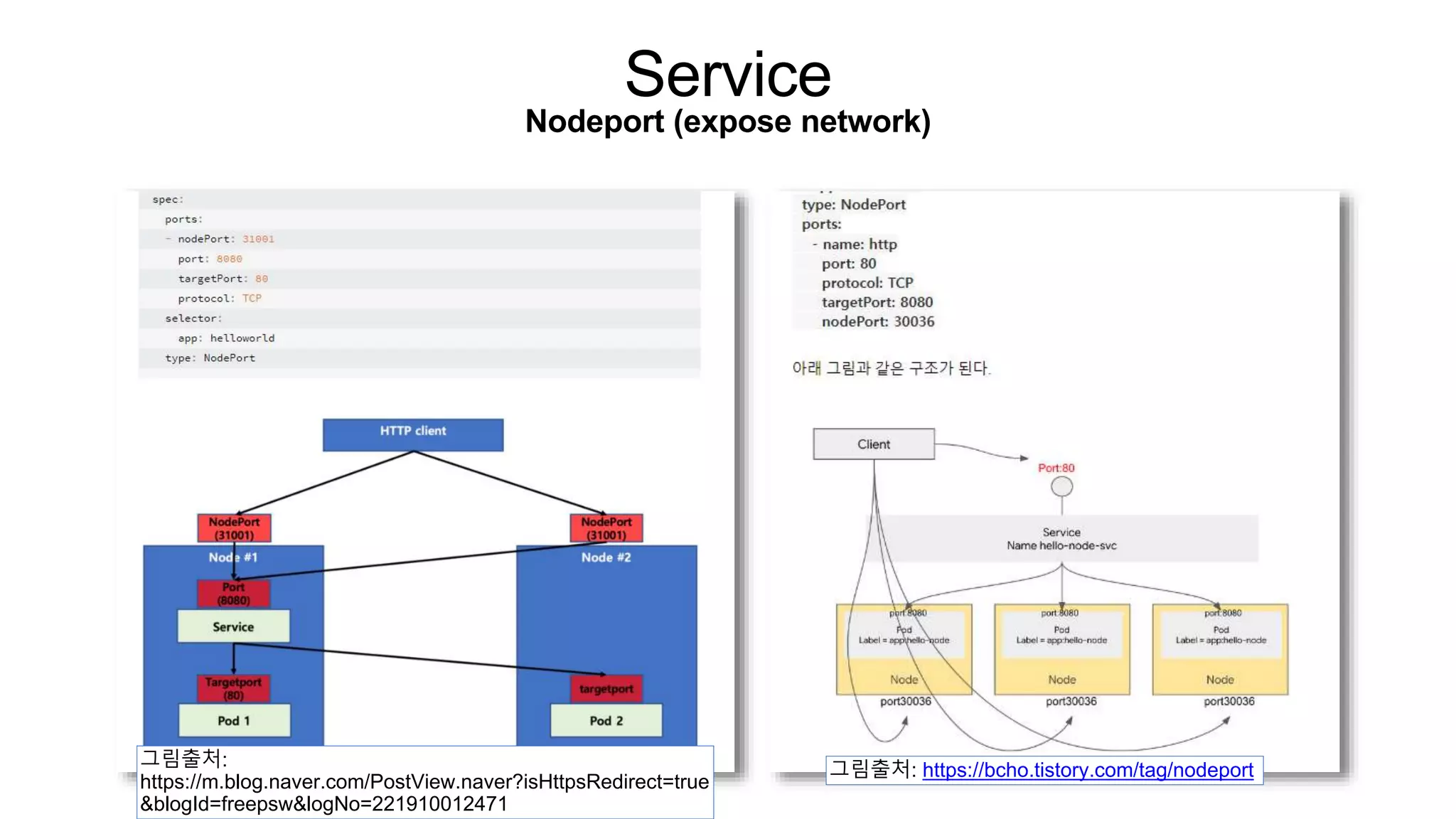
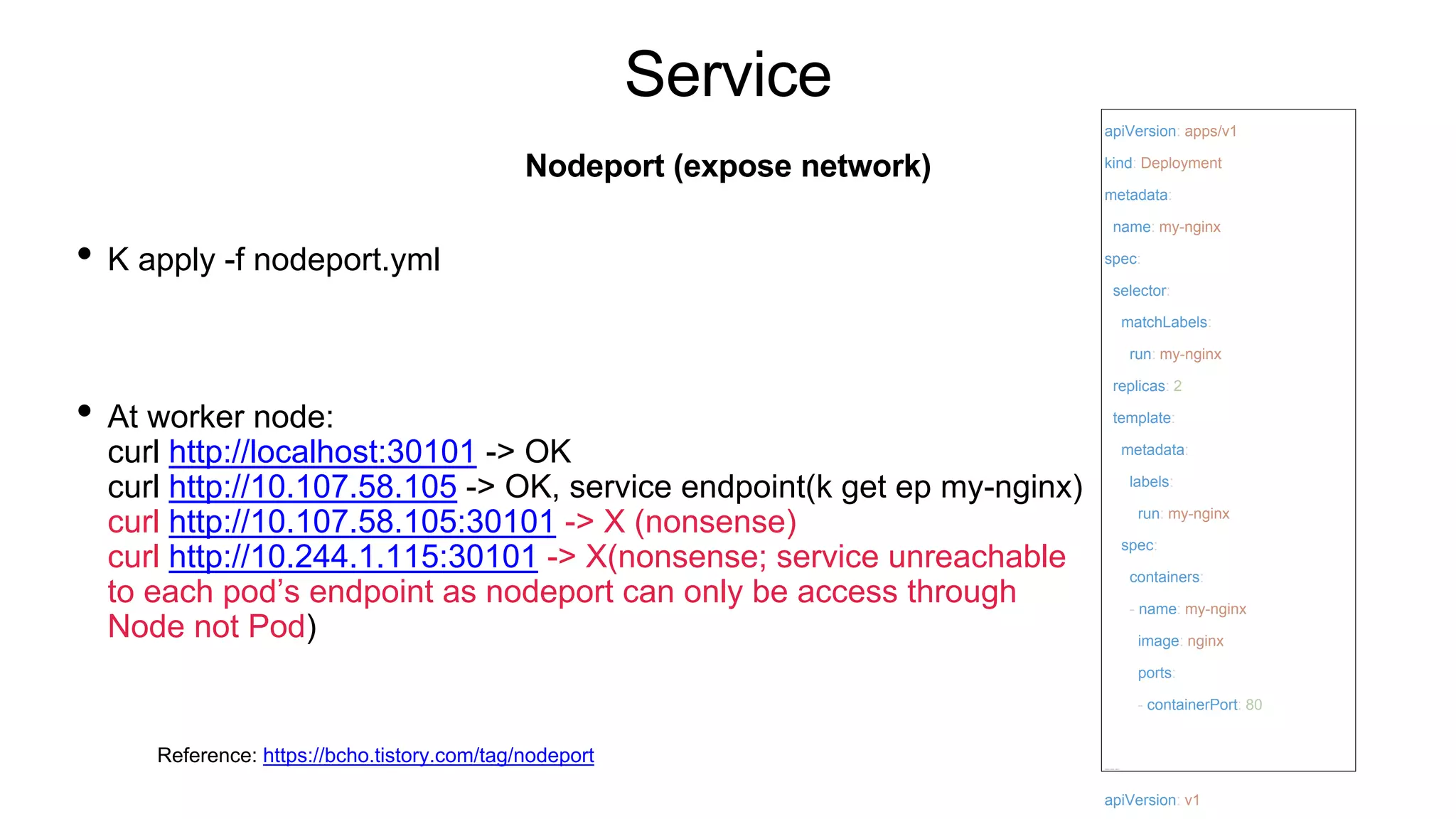
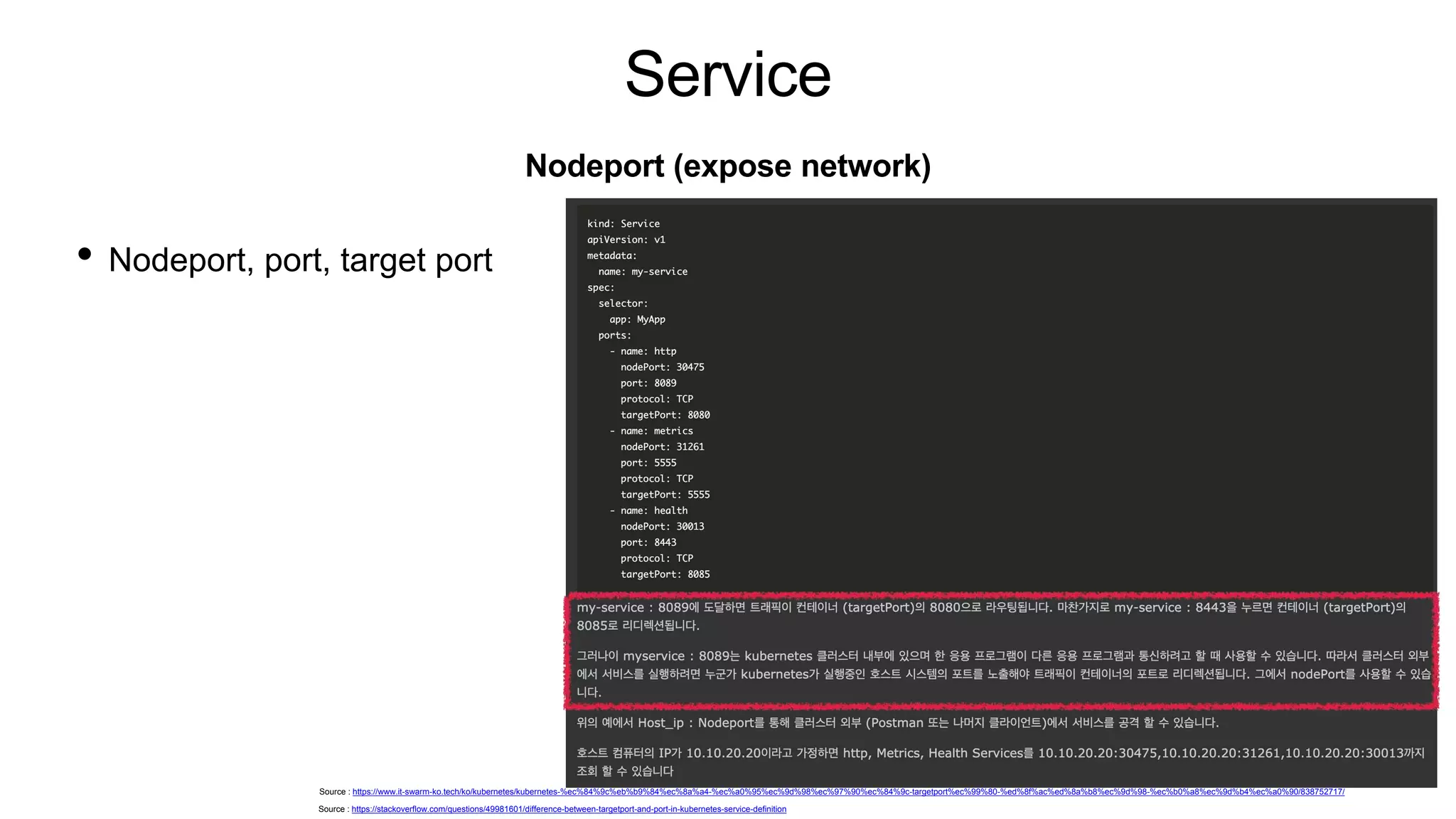

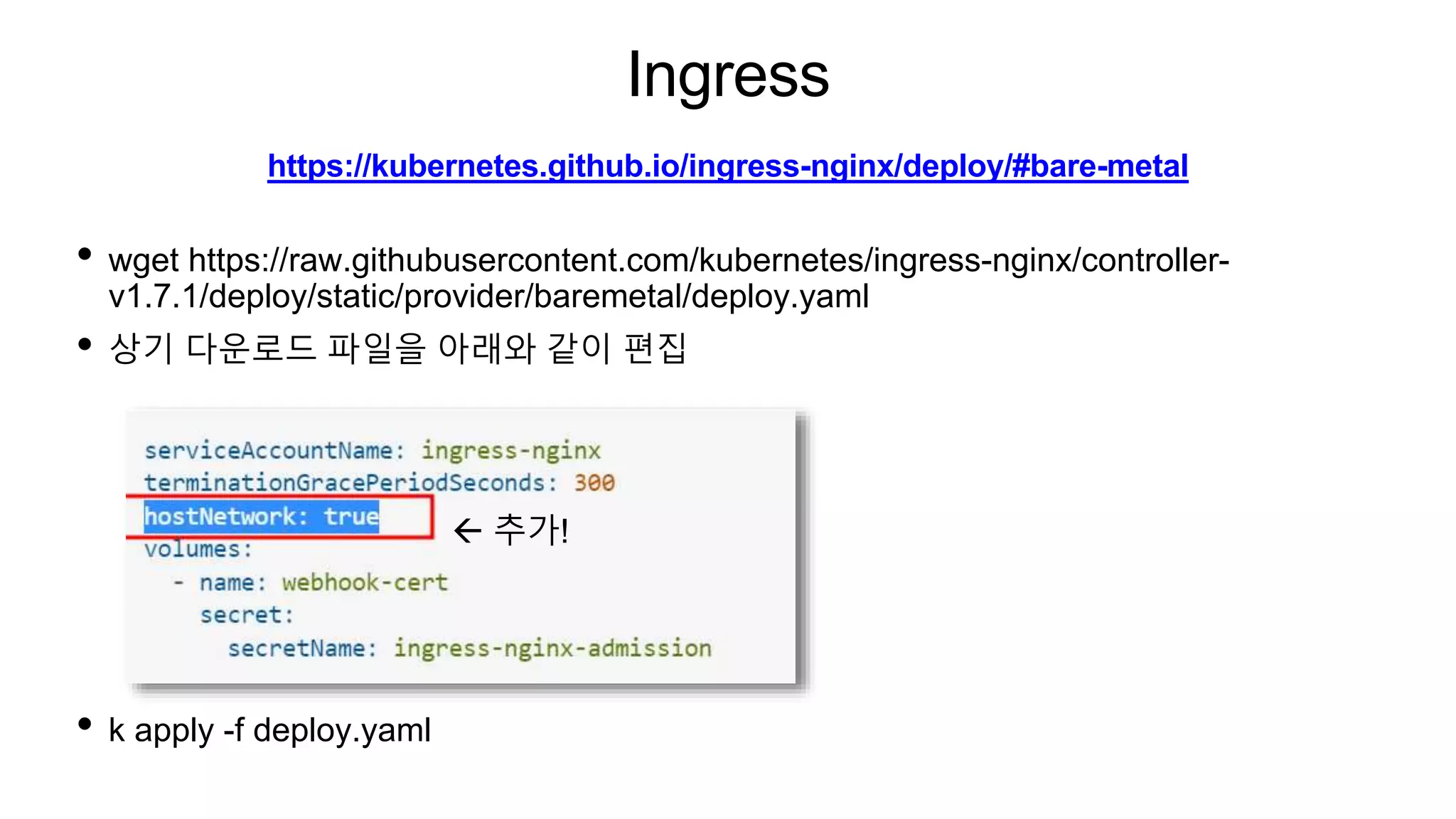
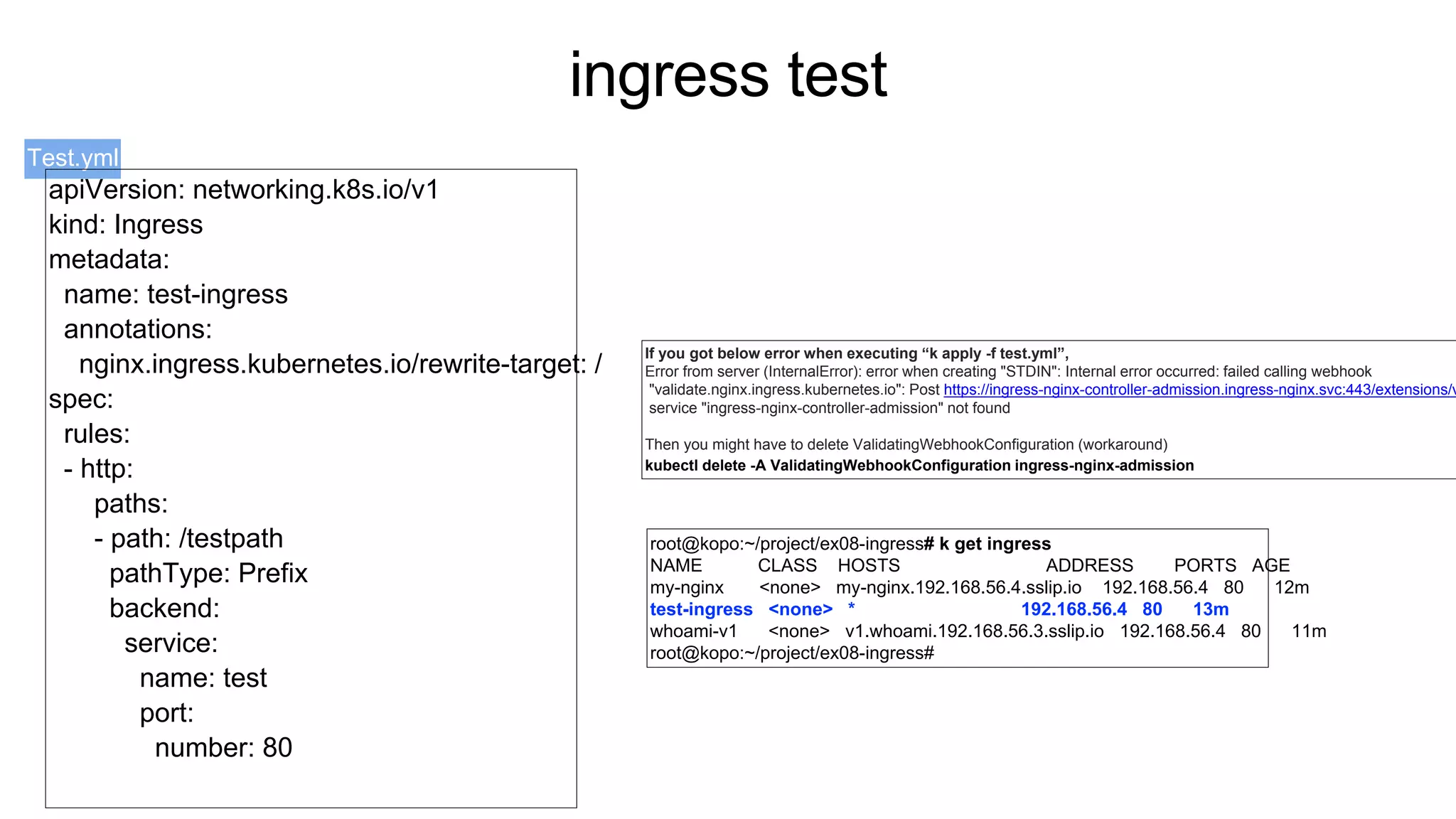
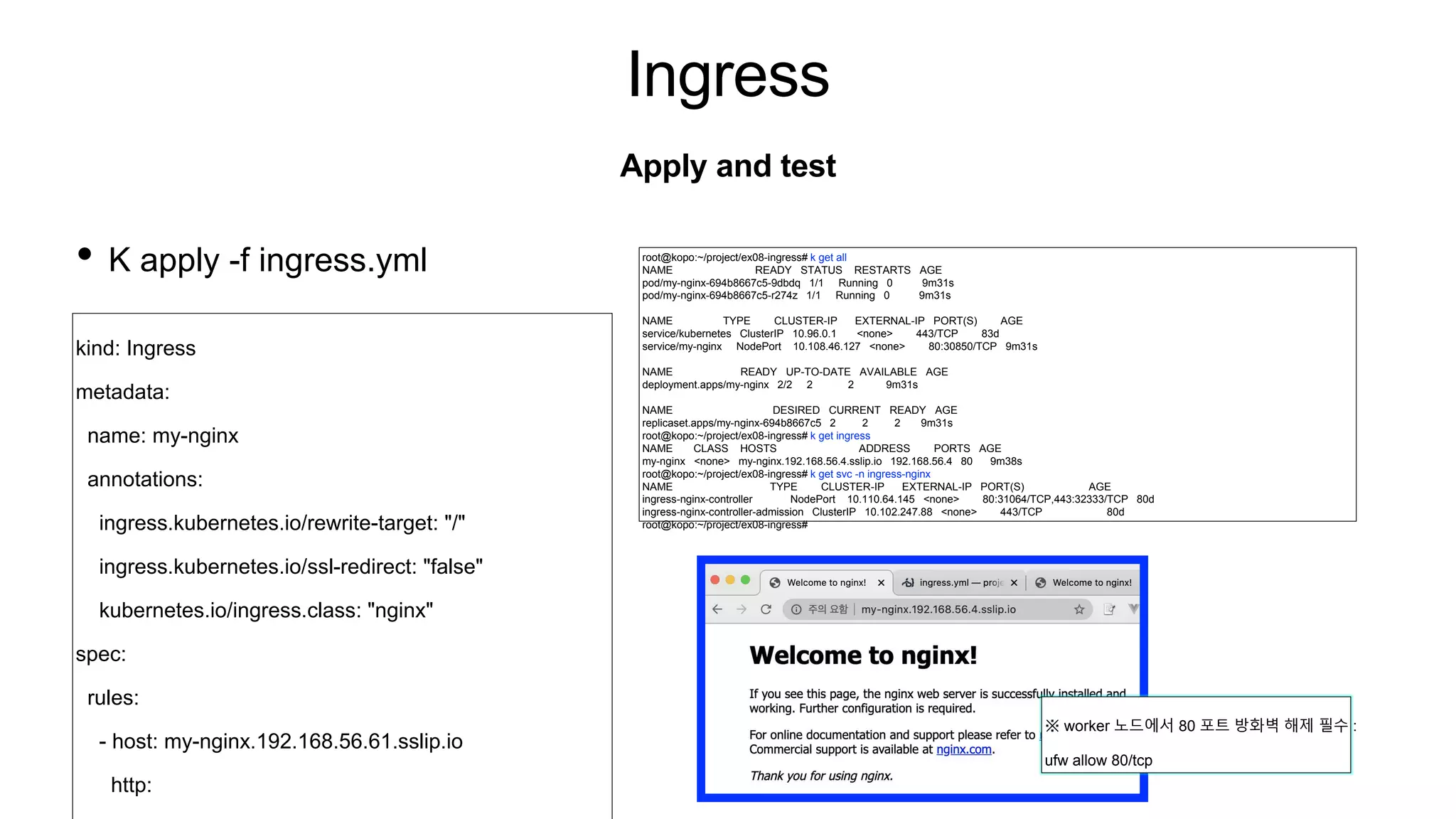

![Log search
• kubectl logs [pod name] -n kube-system
ex> kubectl logs coredns-383838-fh38fh8 -n kube-system
• kubectl describe nodes](https://image.slidesharecdn.com/k8spractice2023-230610150819-0475d323/75/k8s-practice-2023-pptx-59-2048.jpg)
